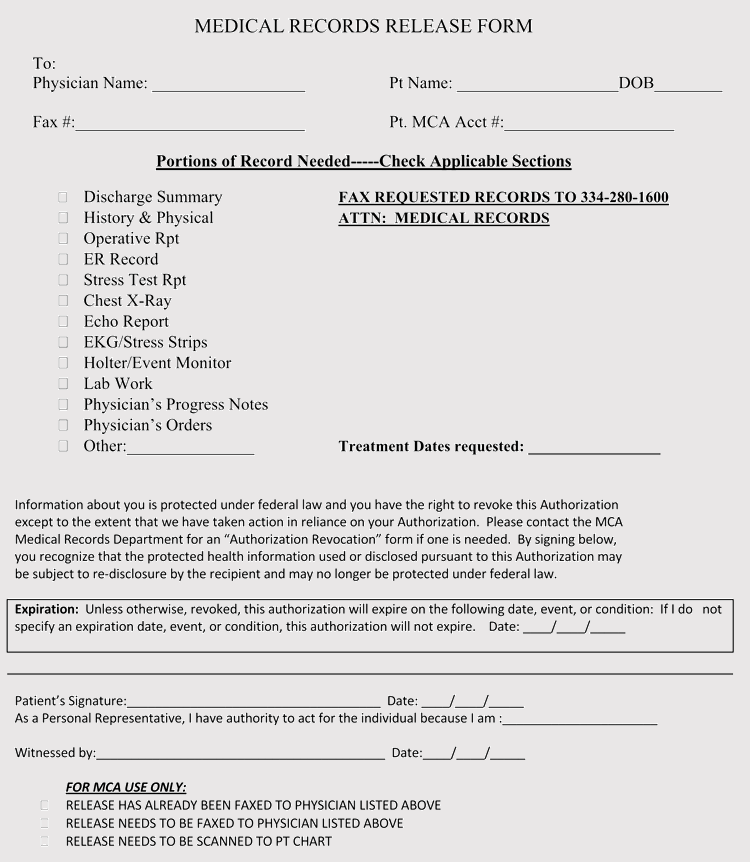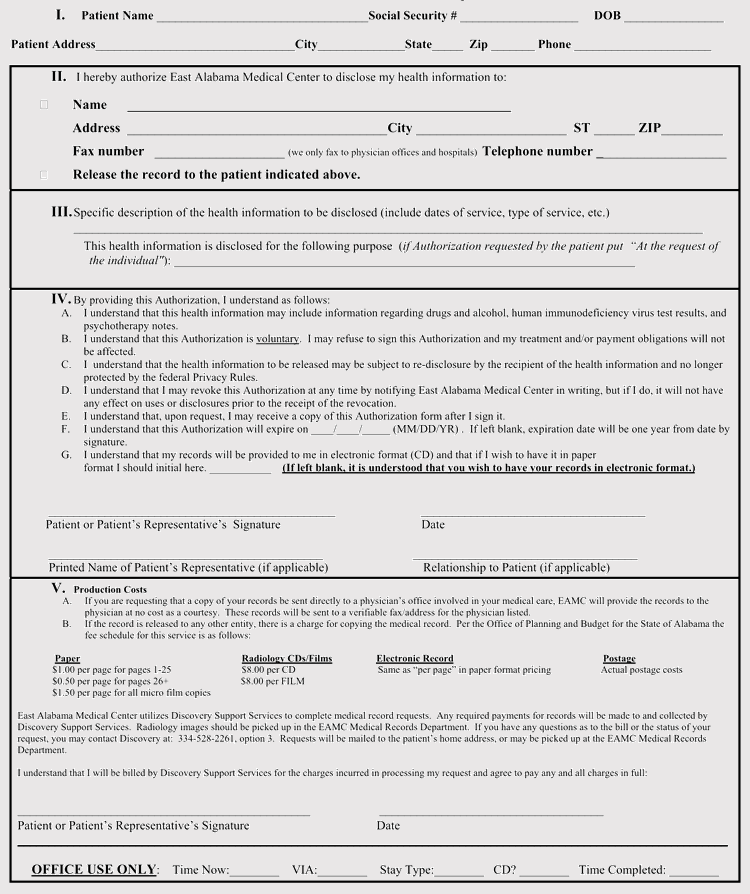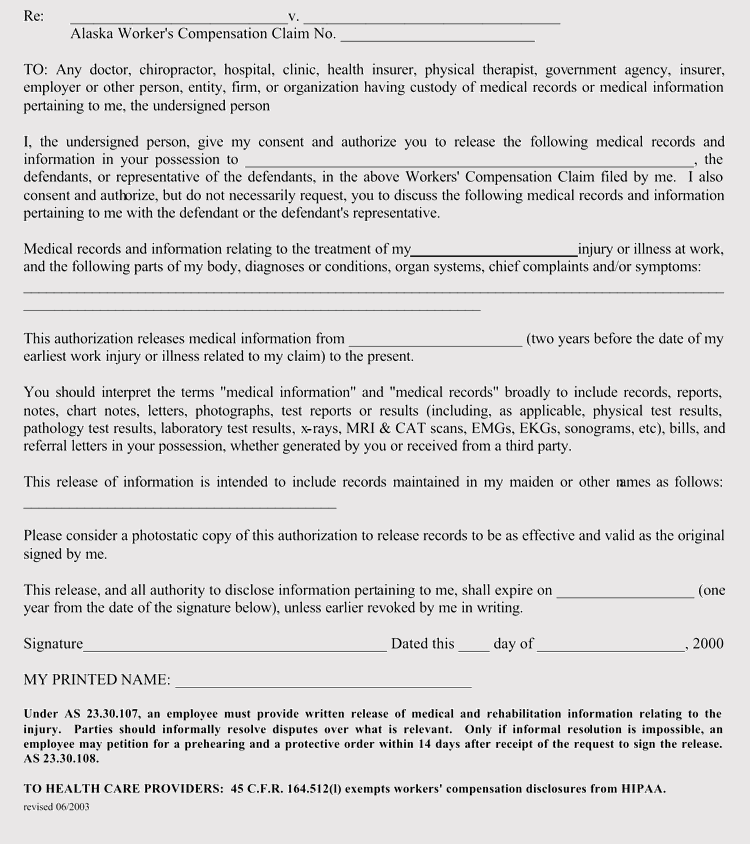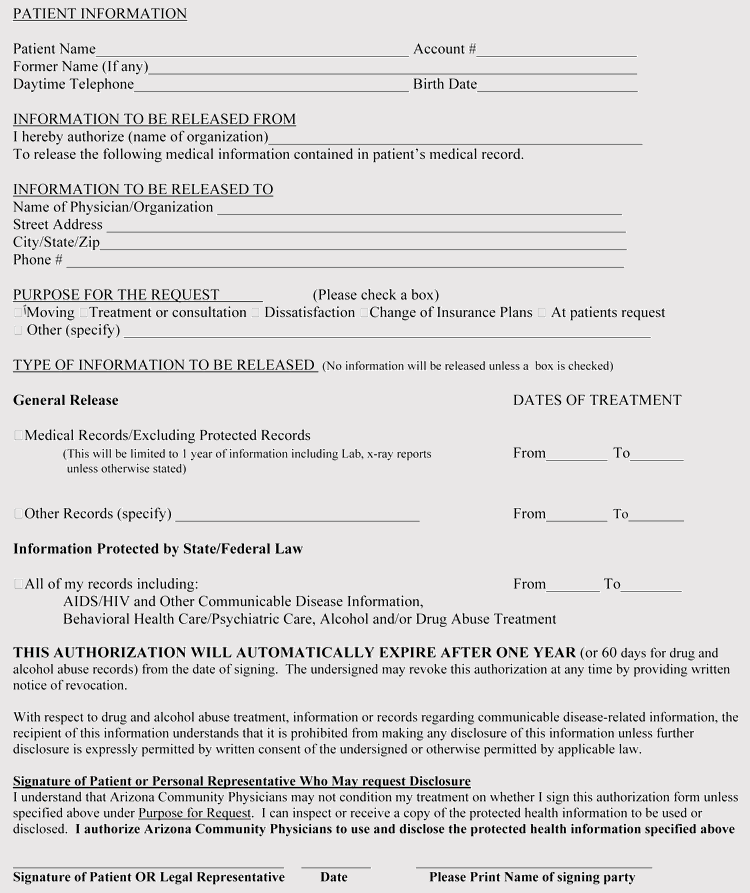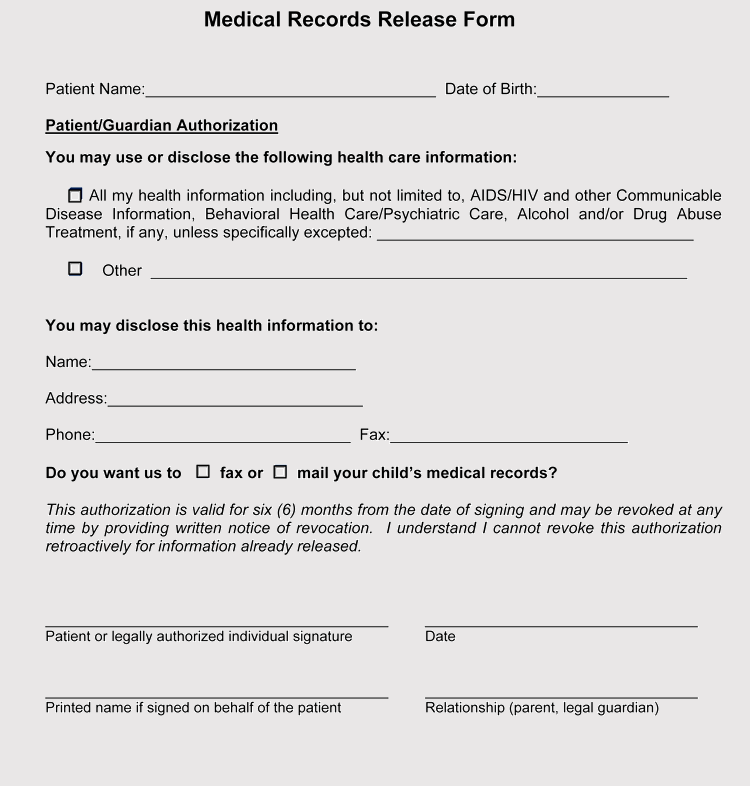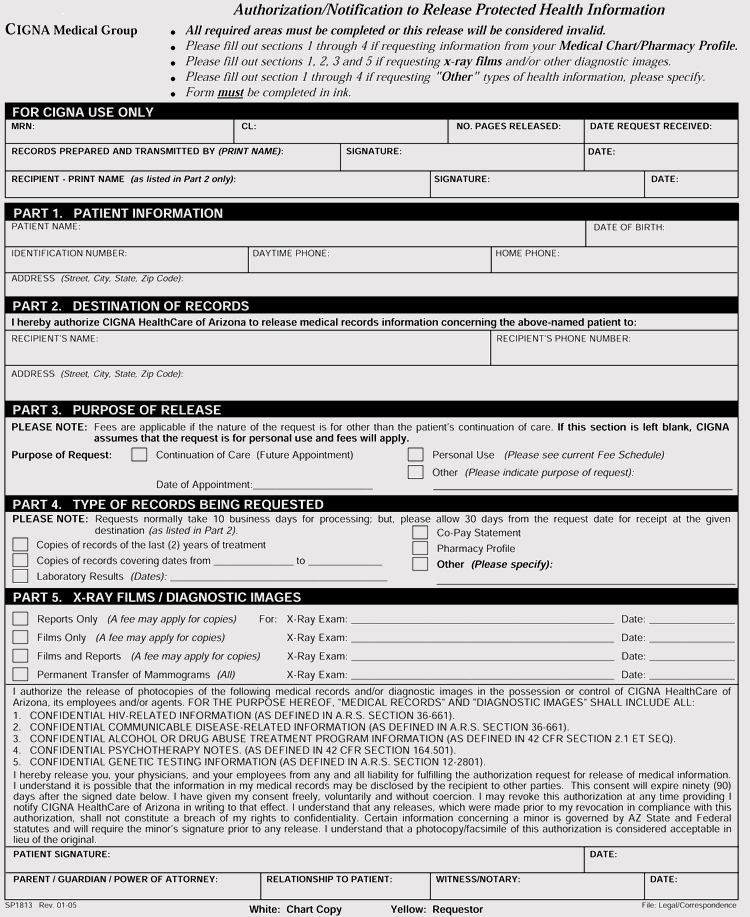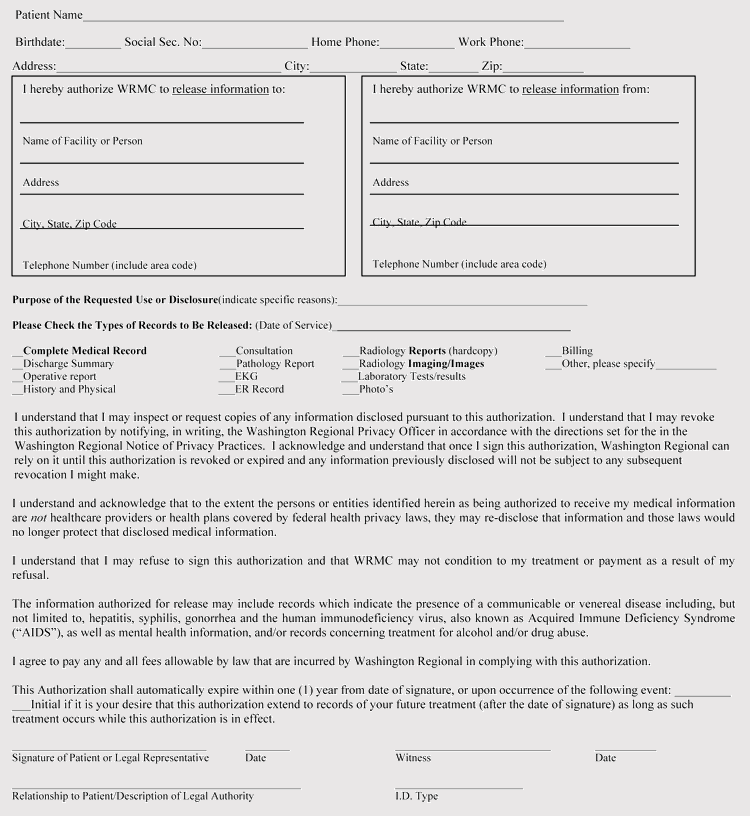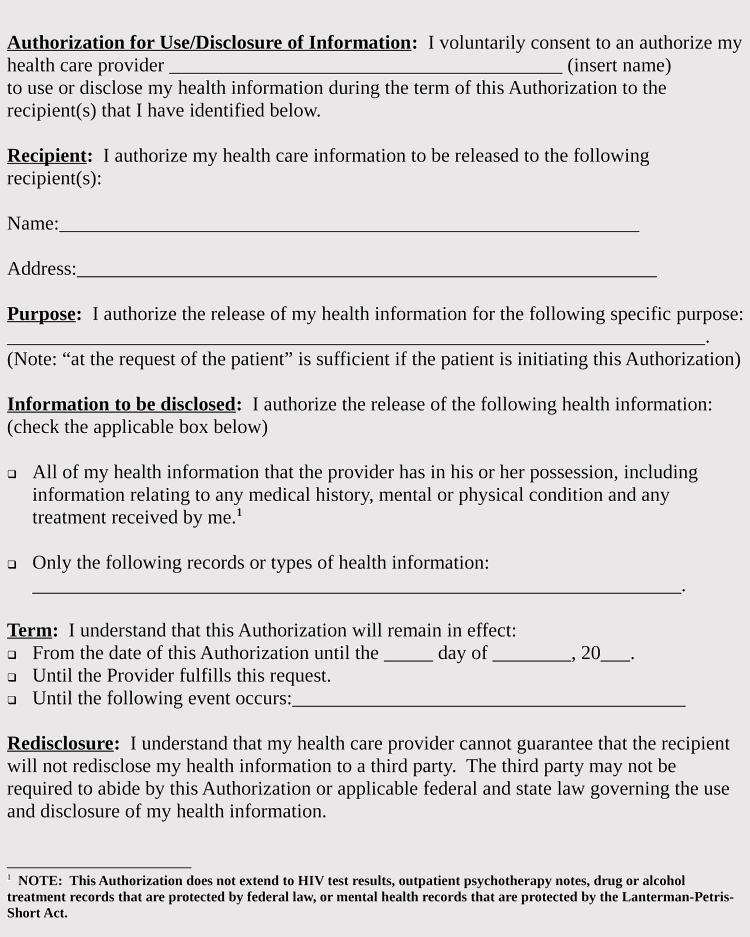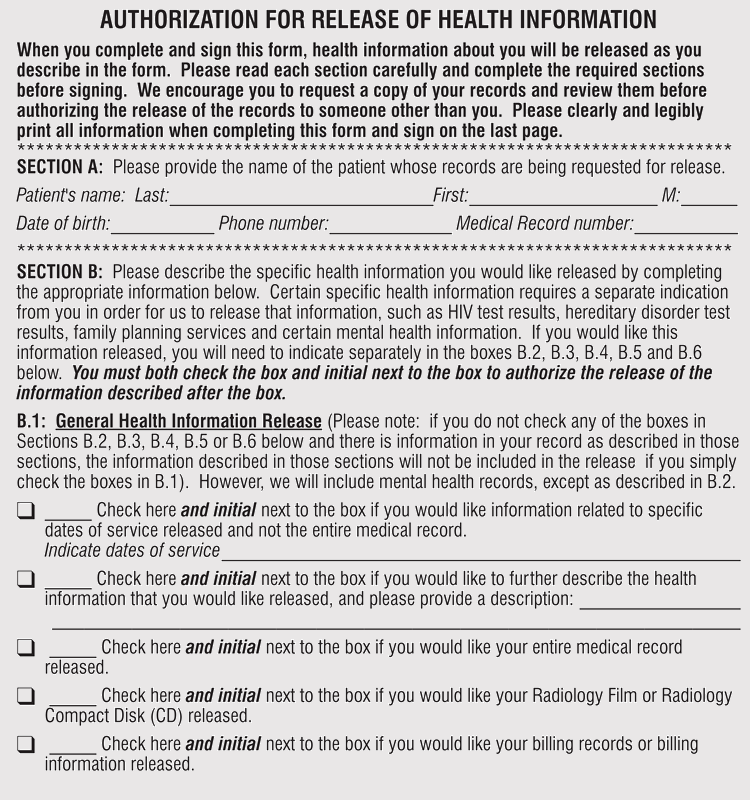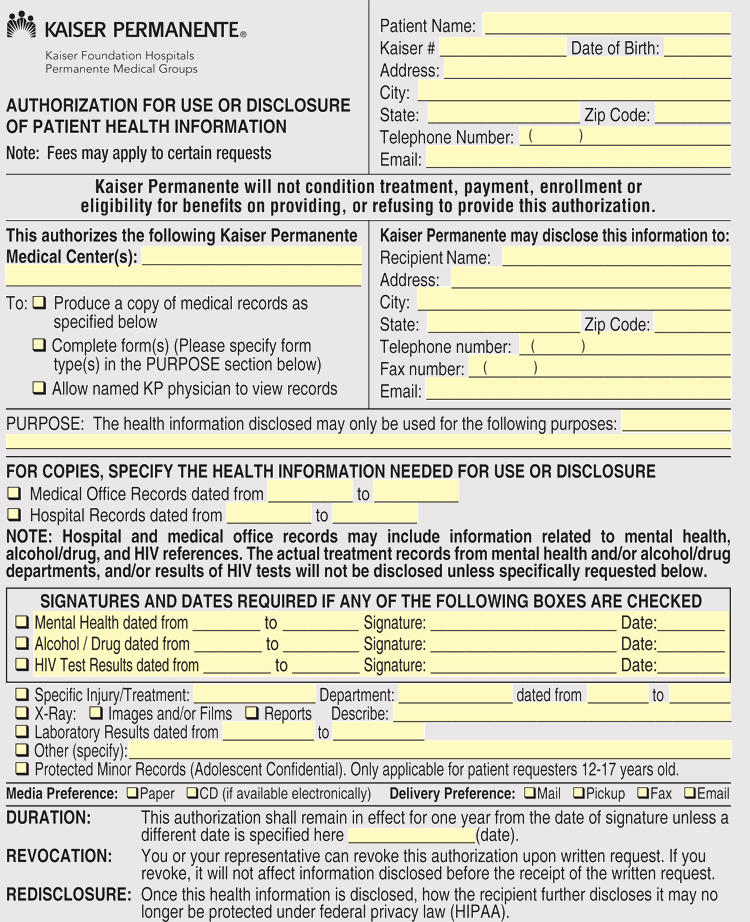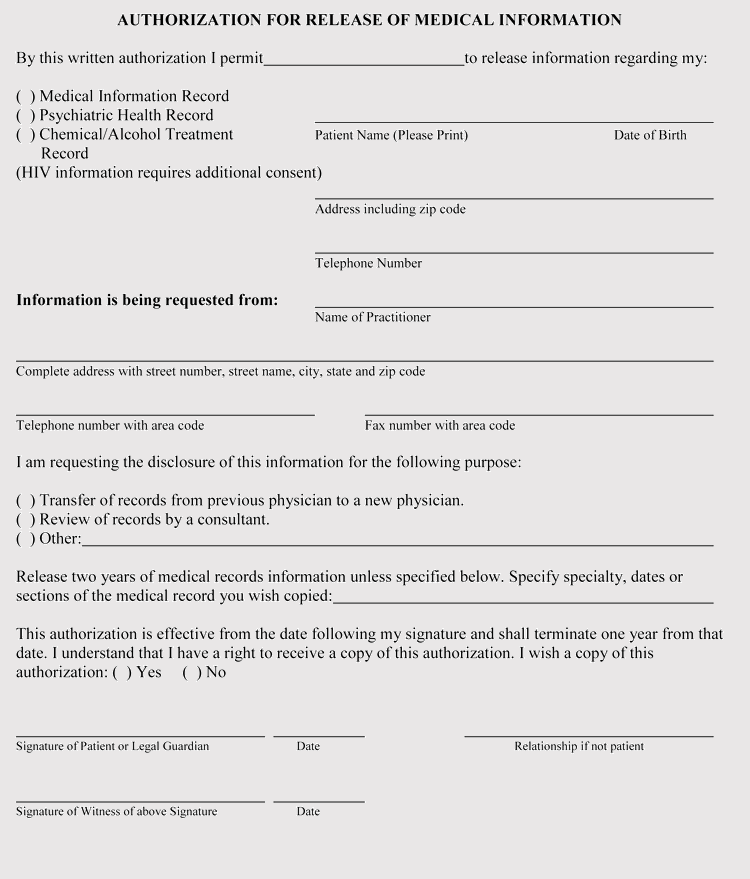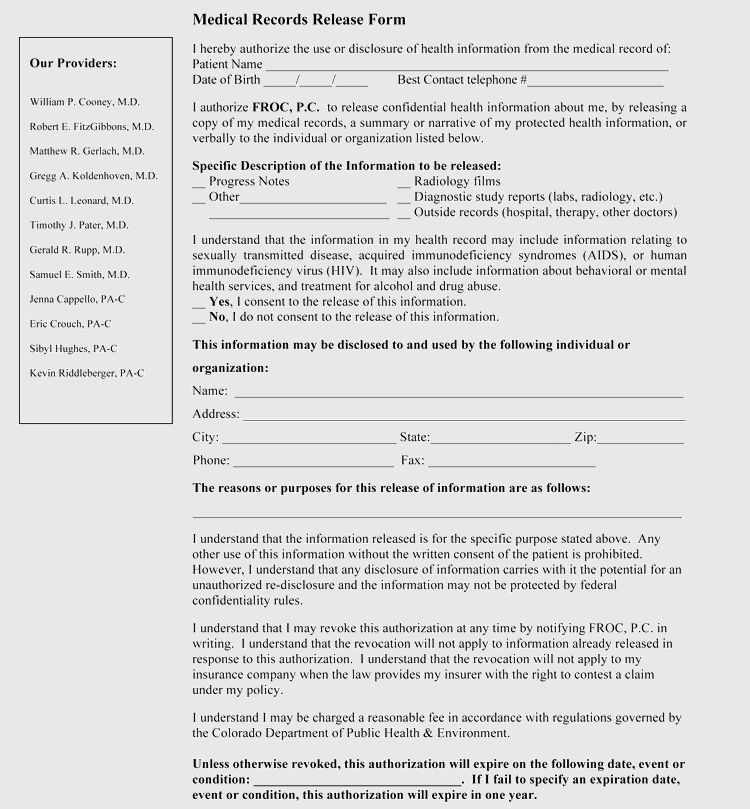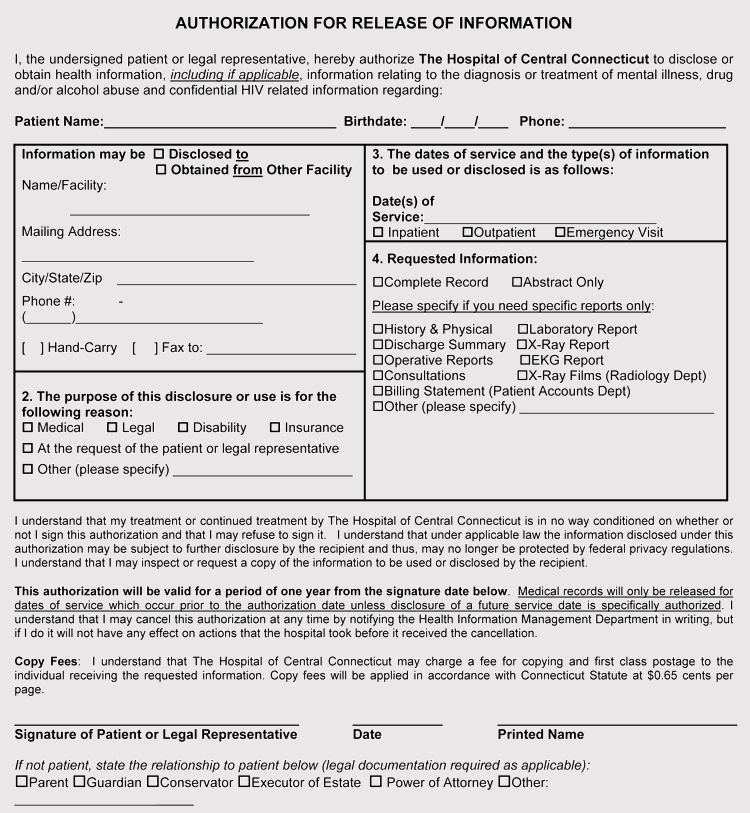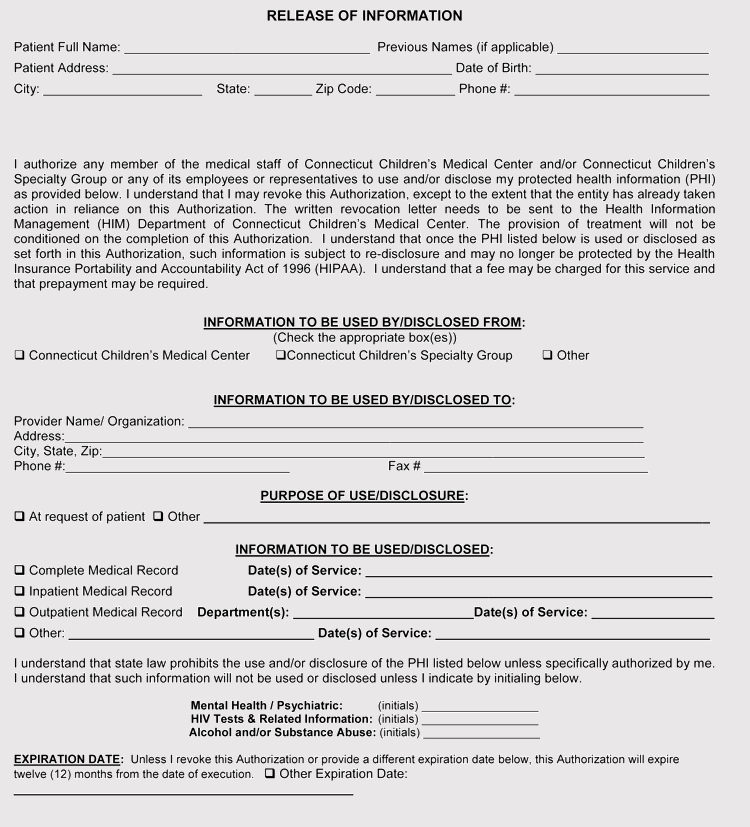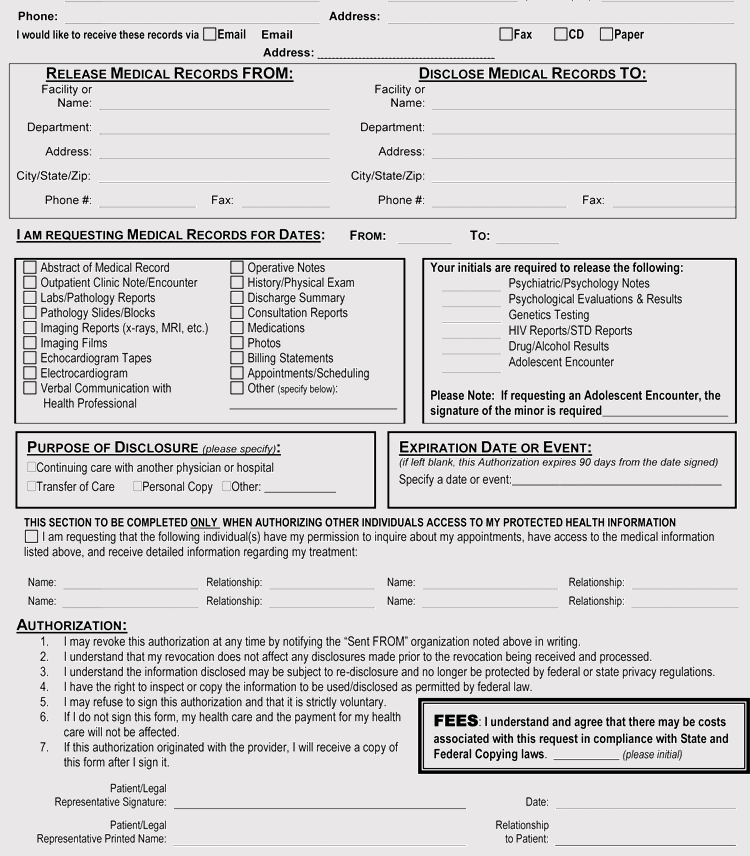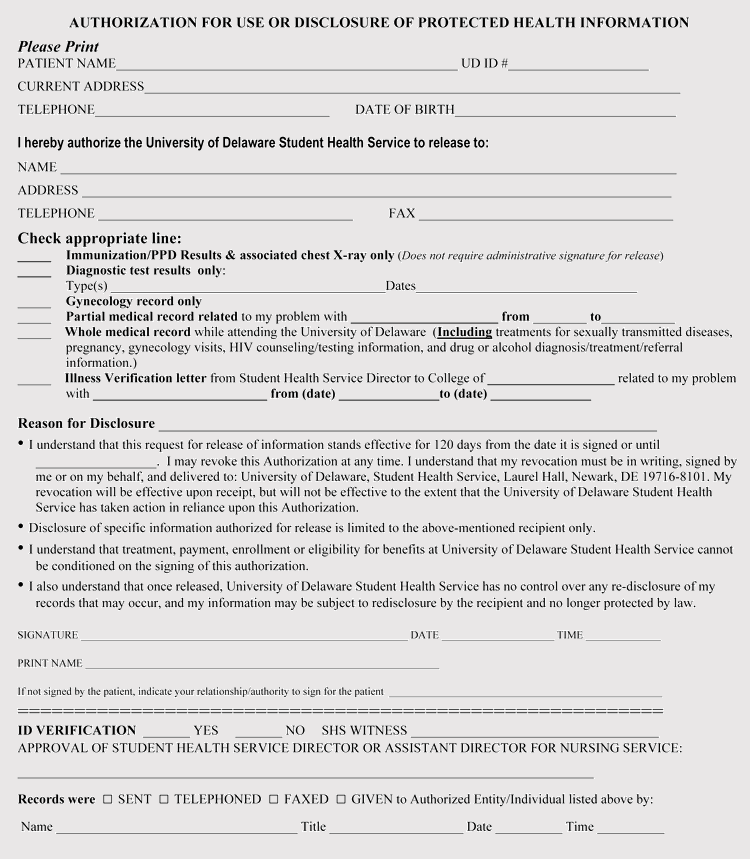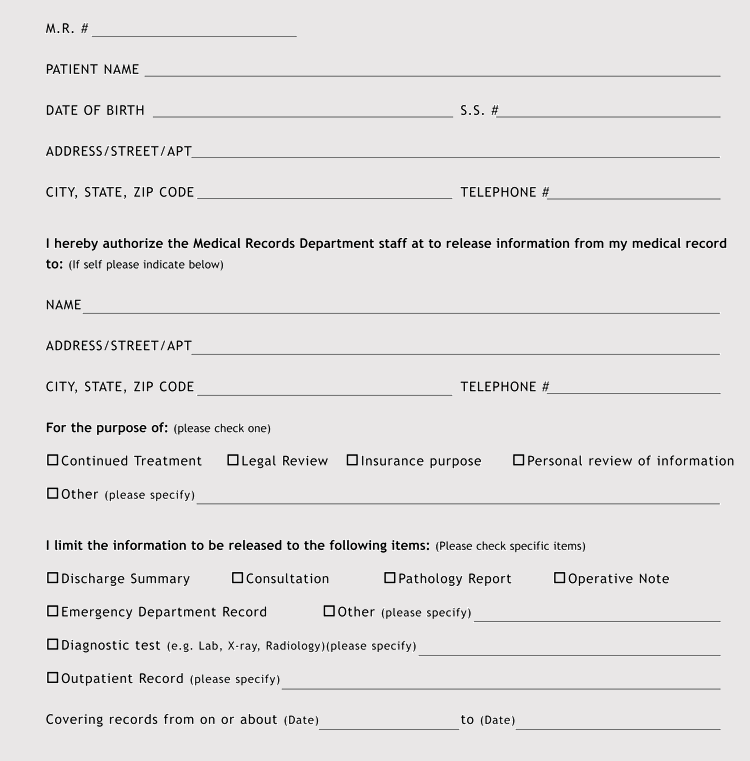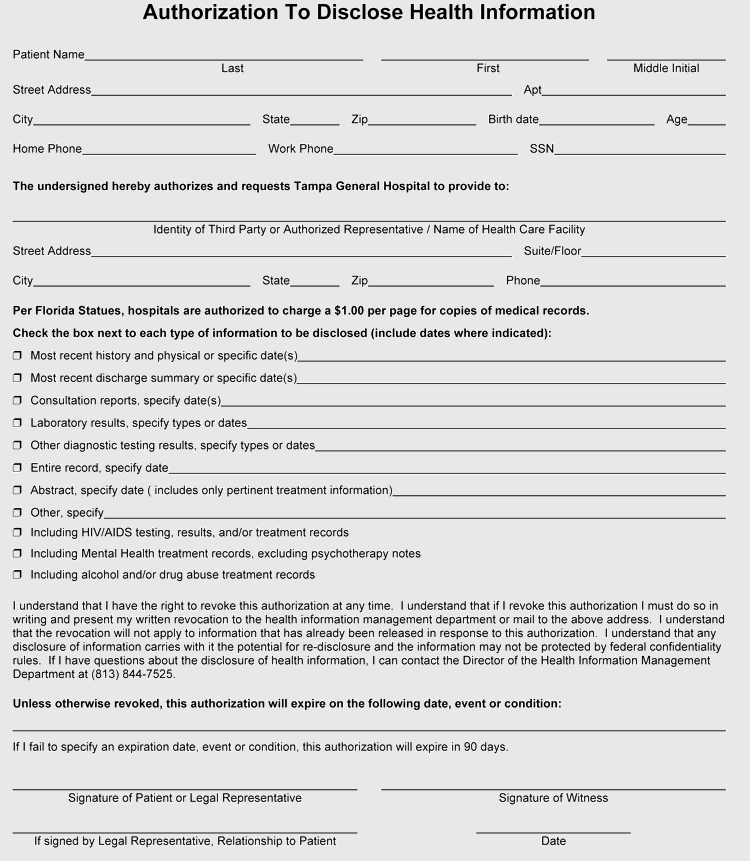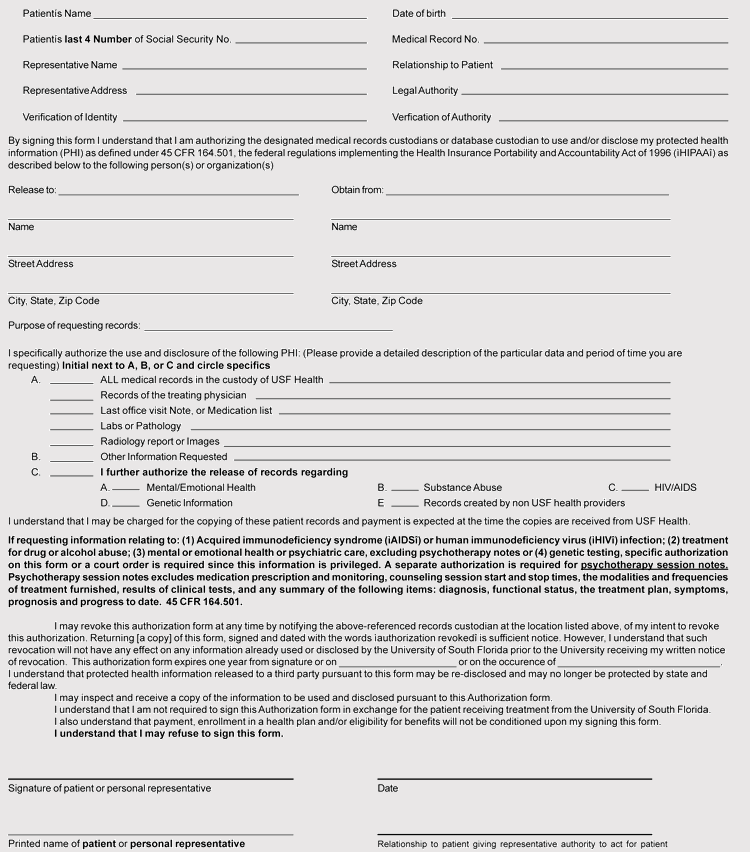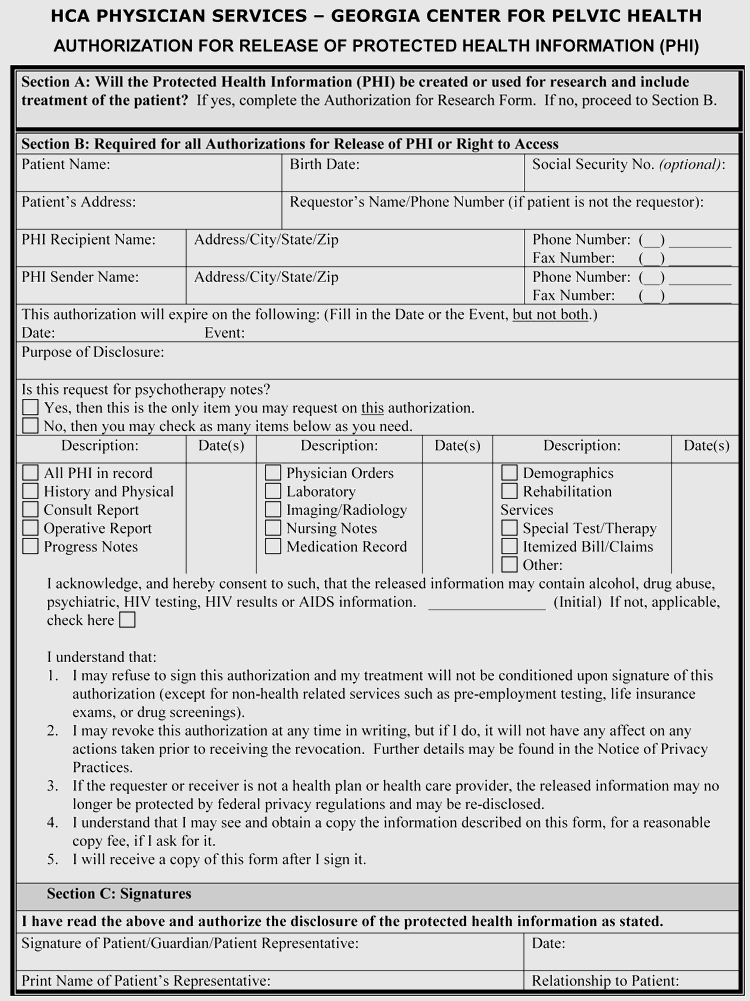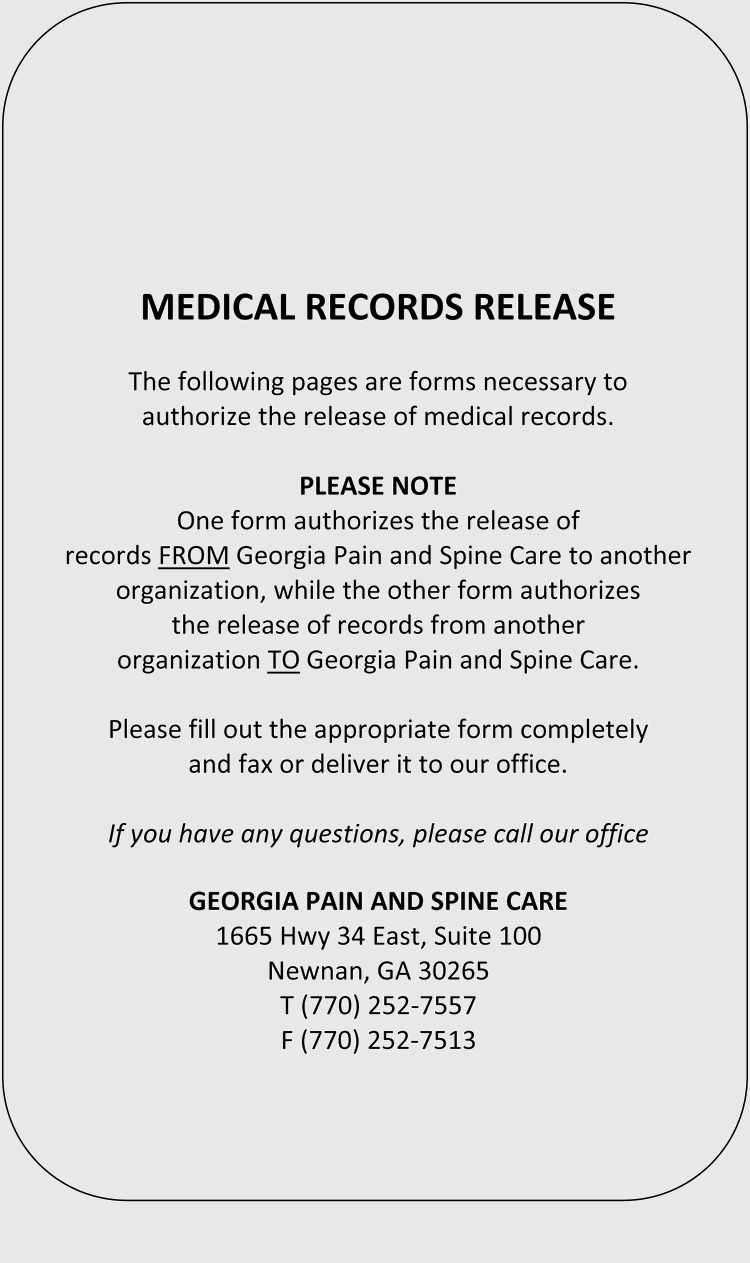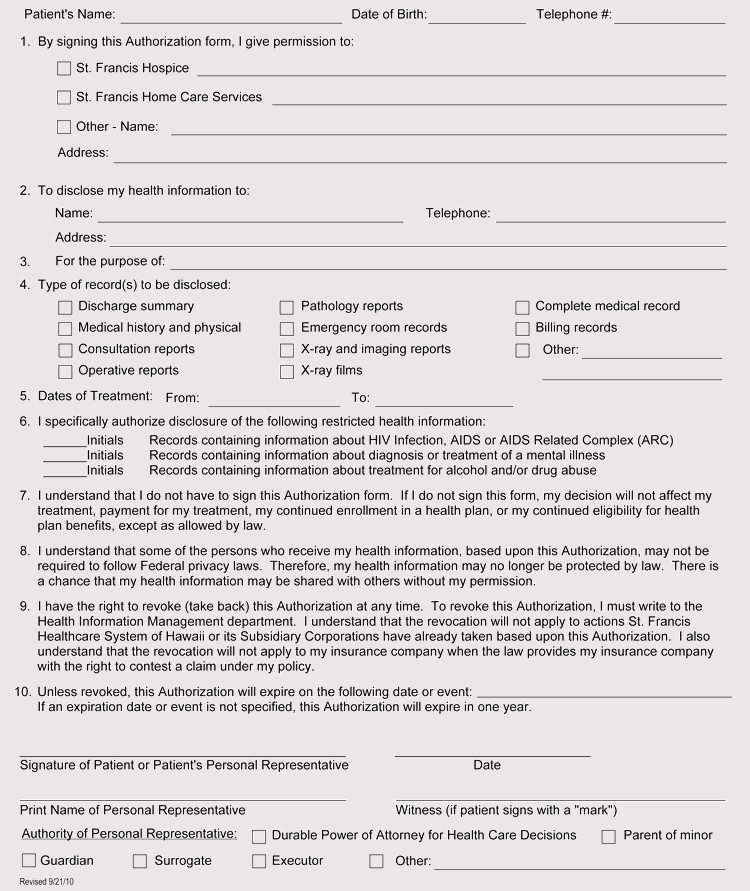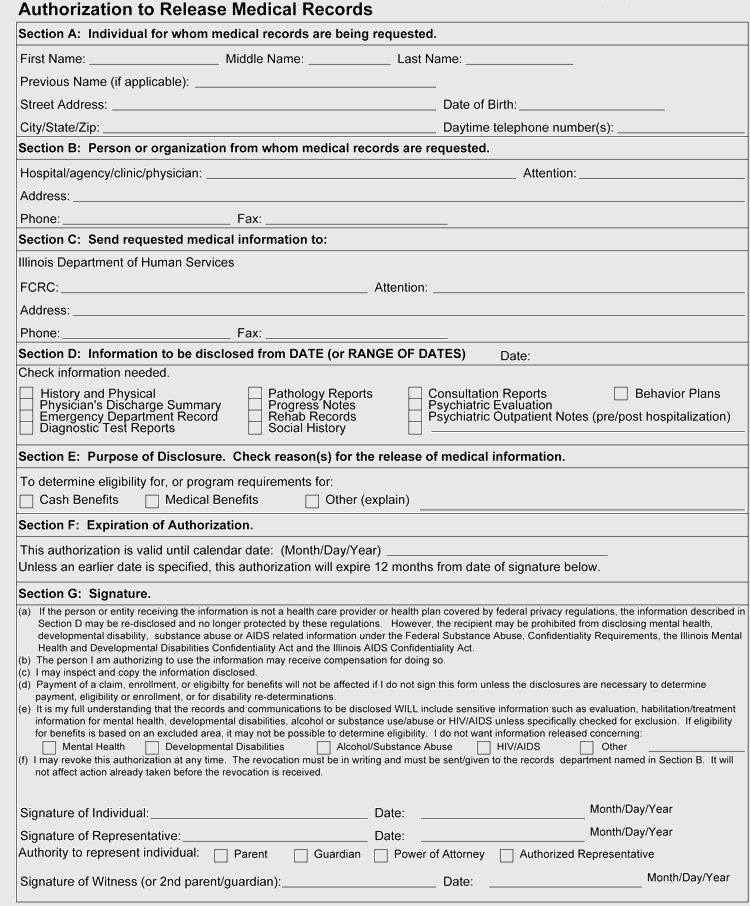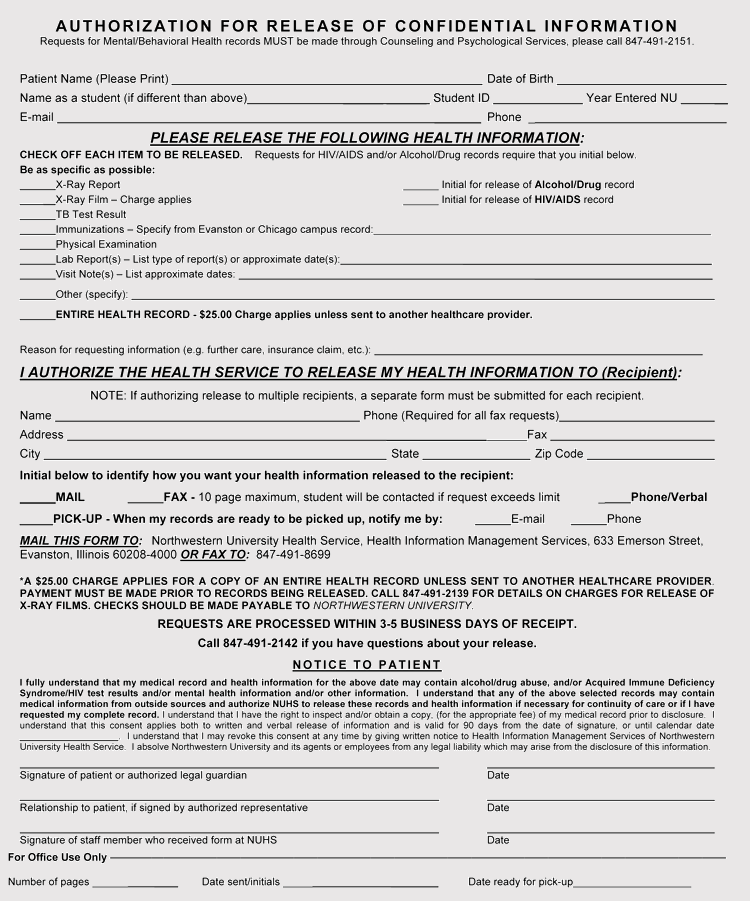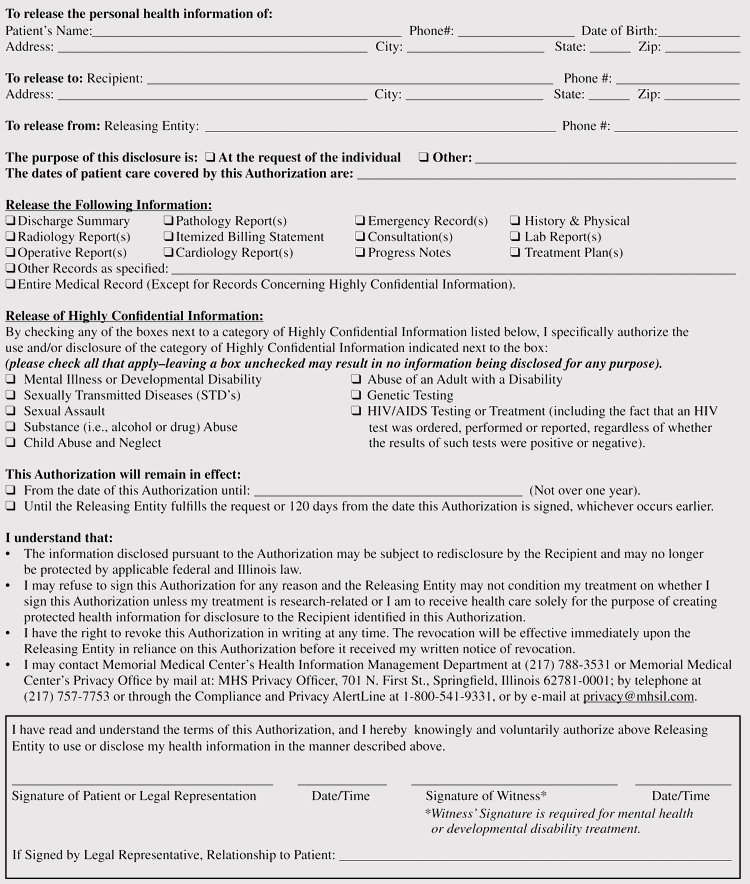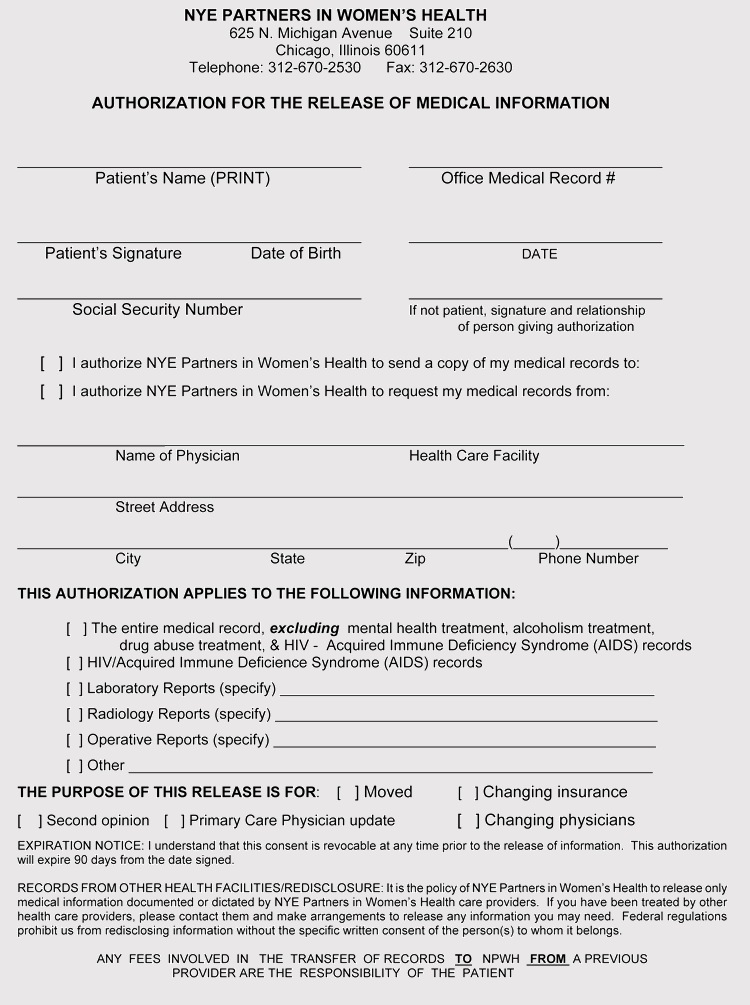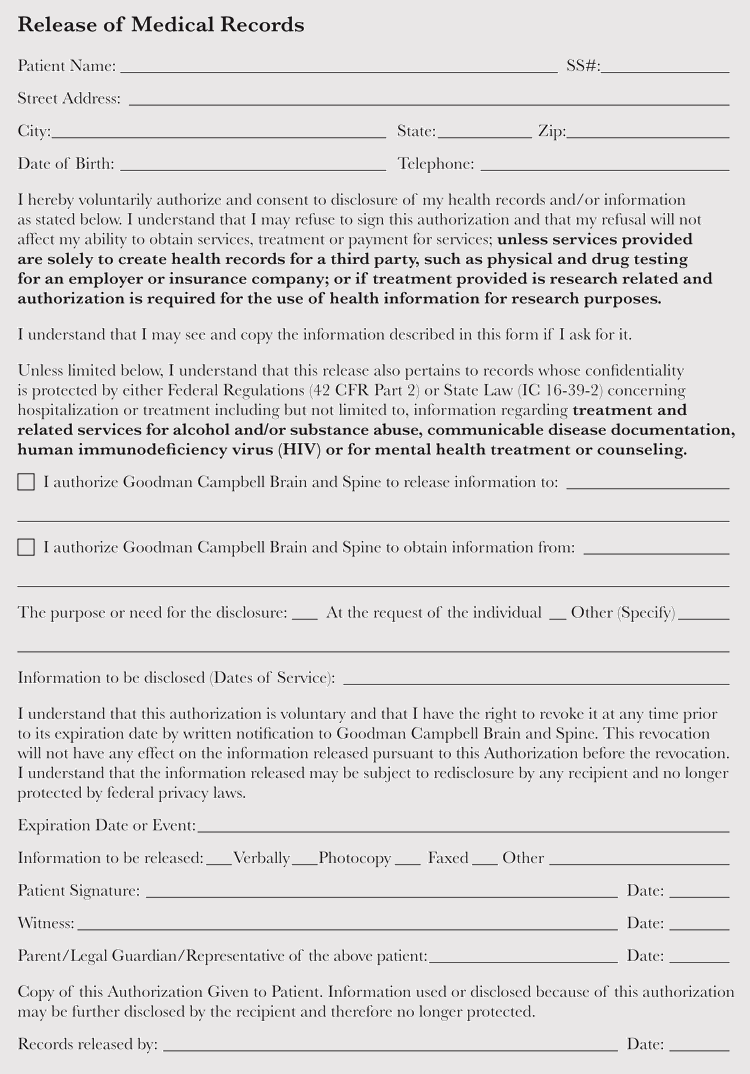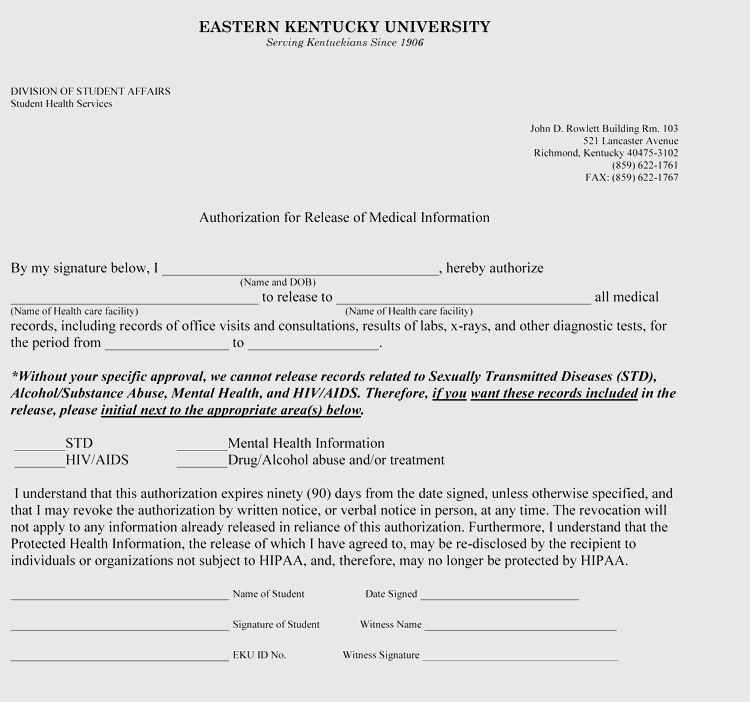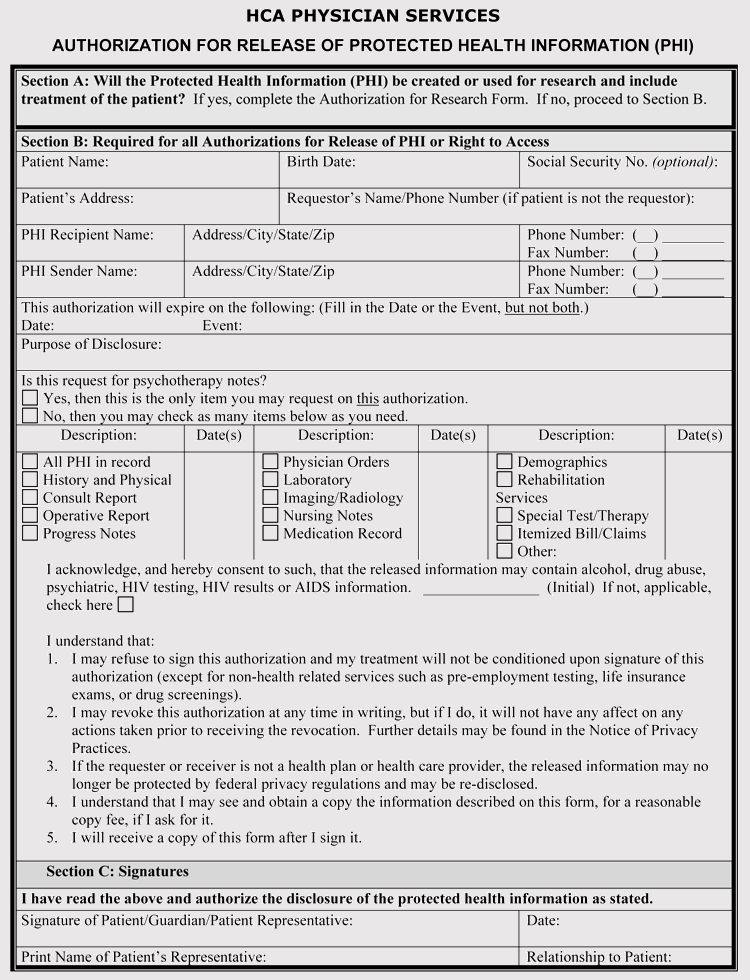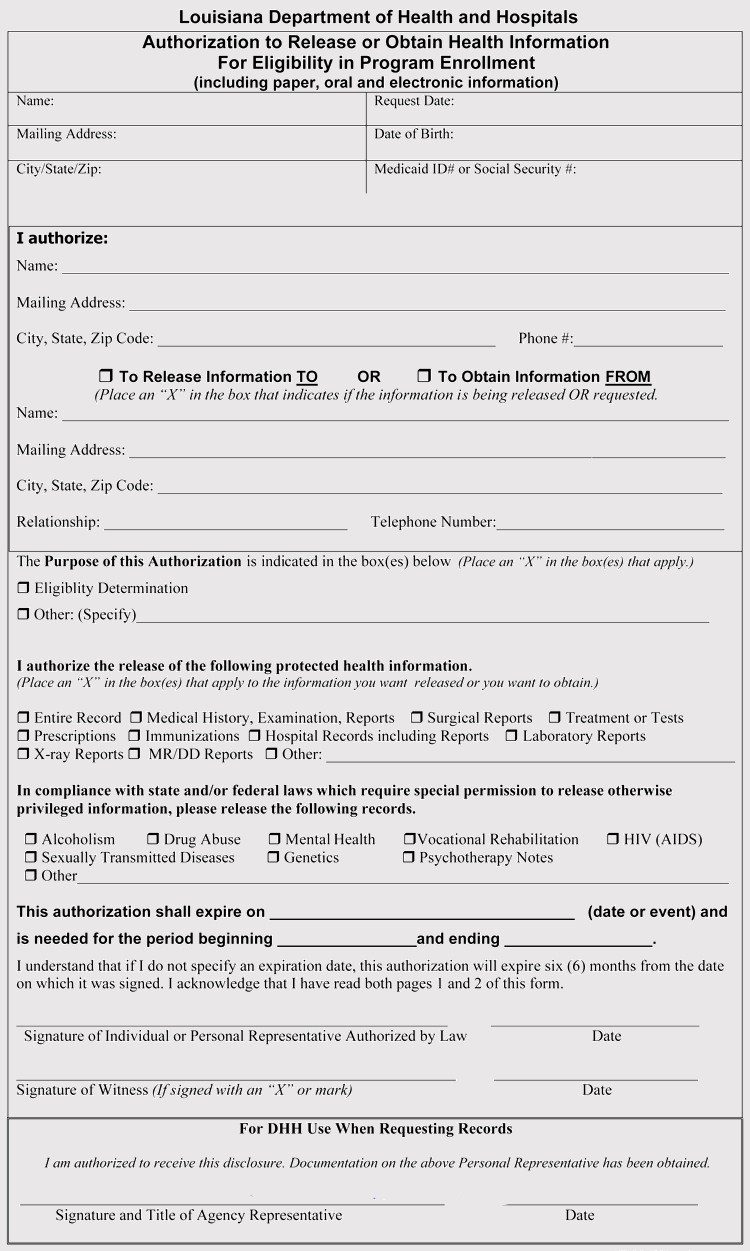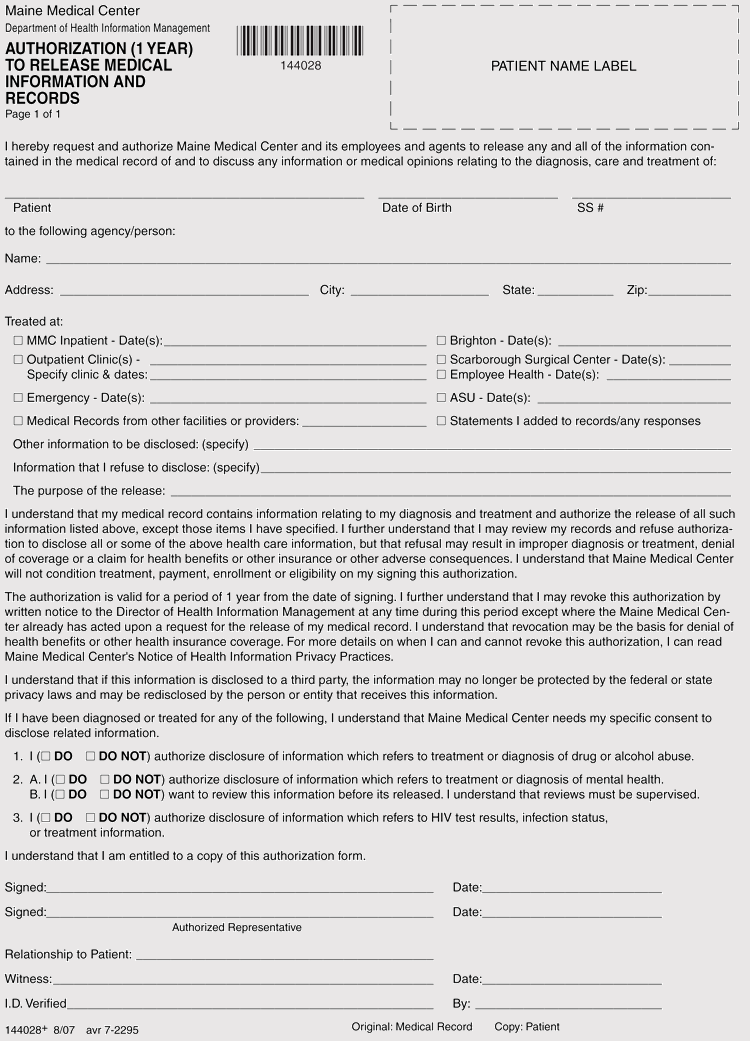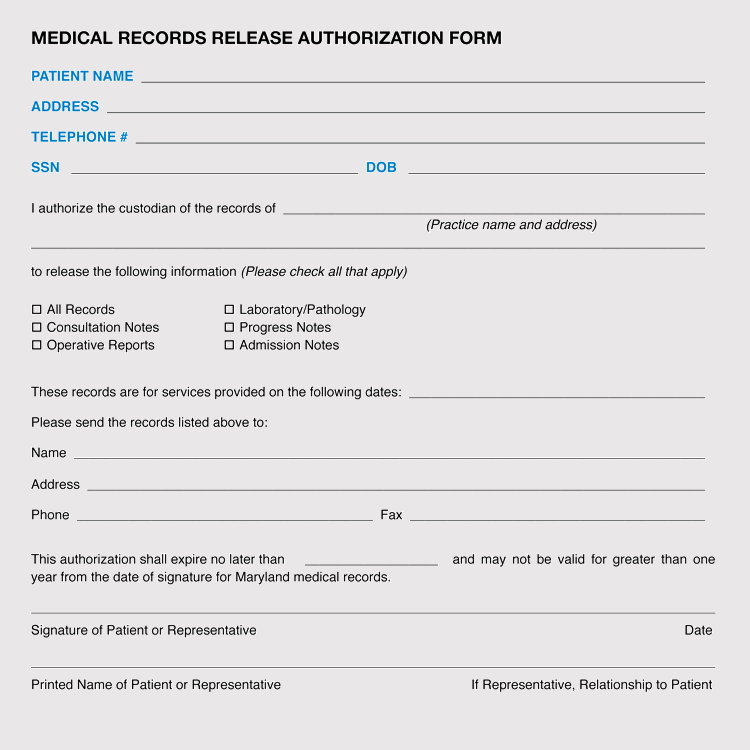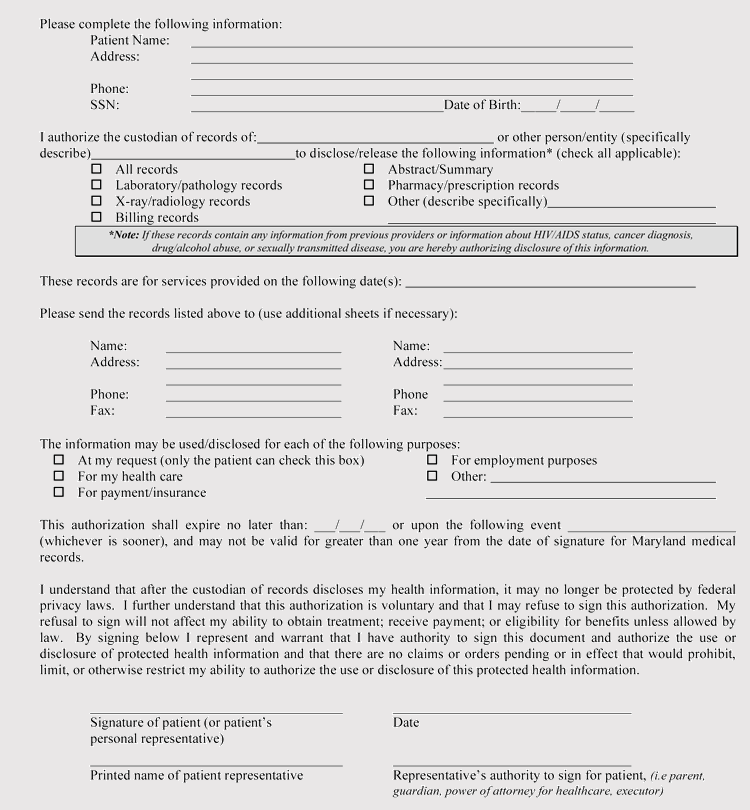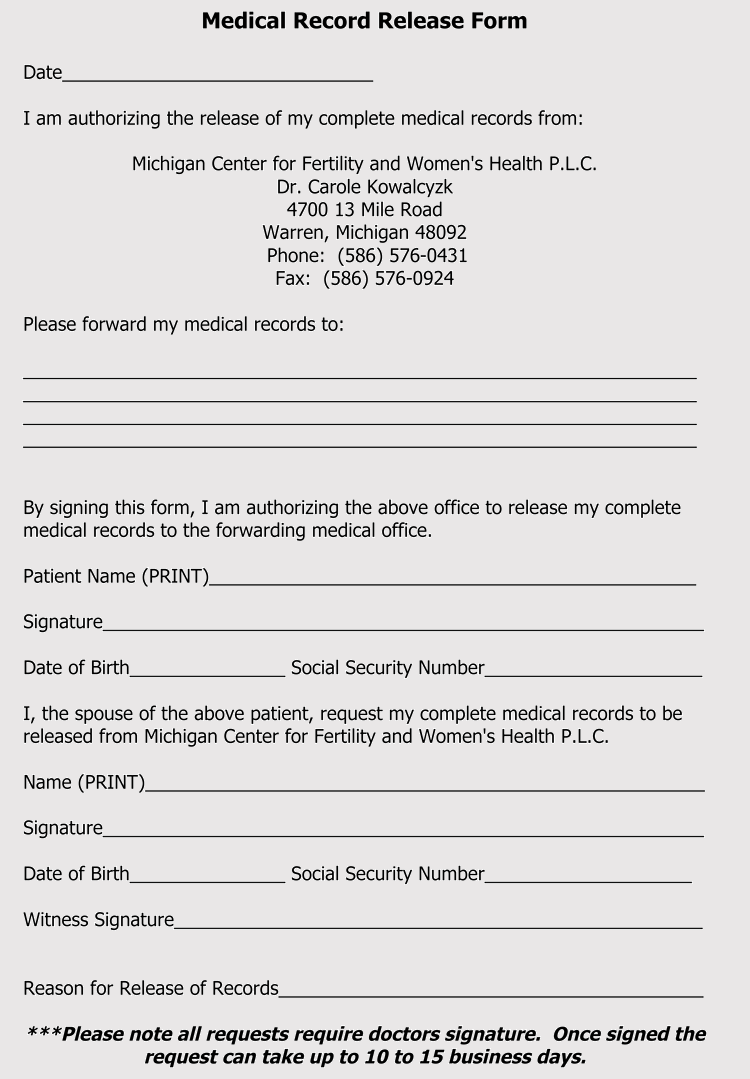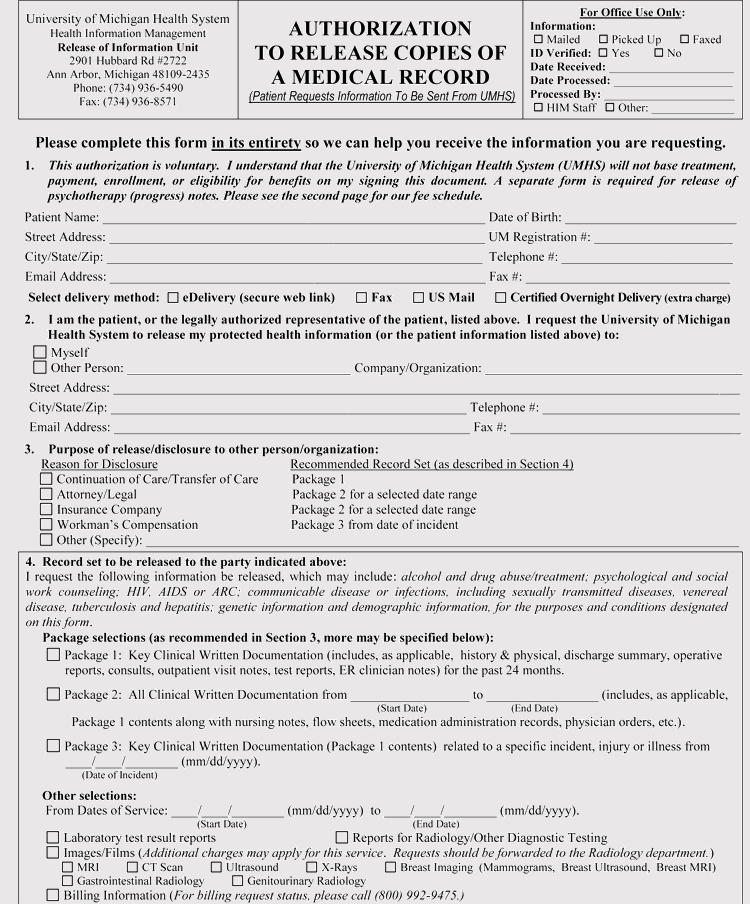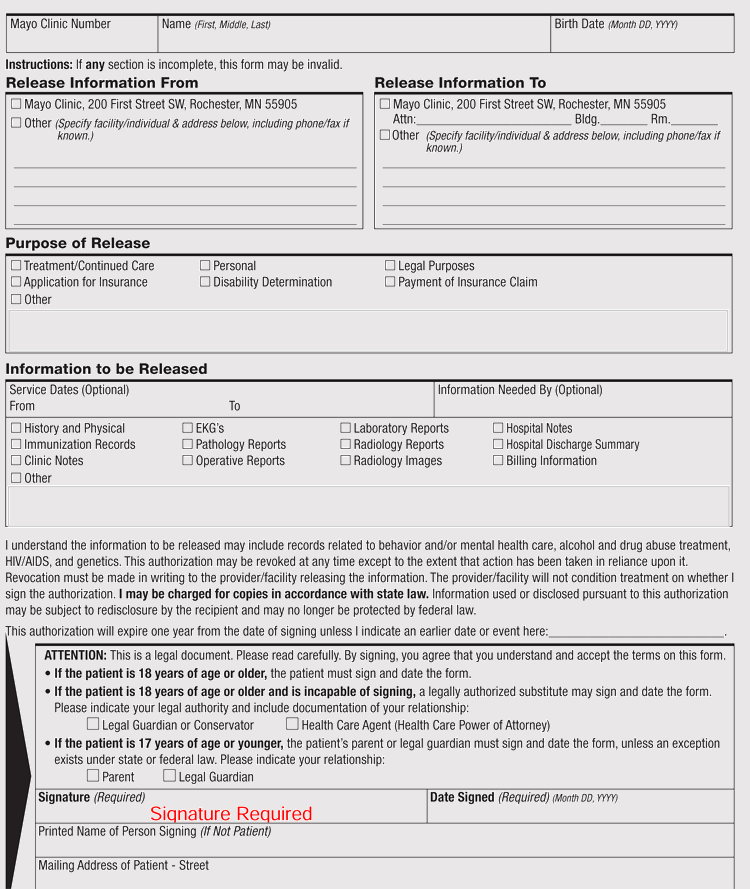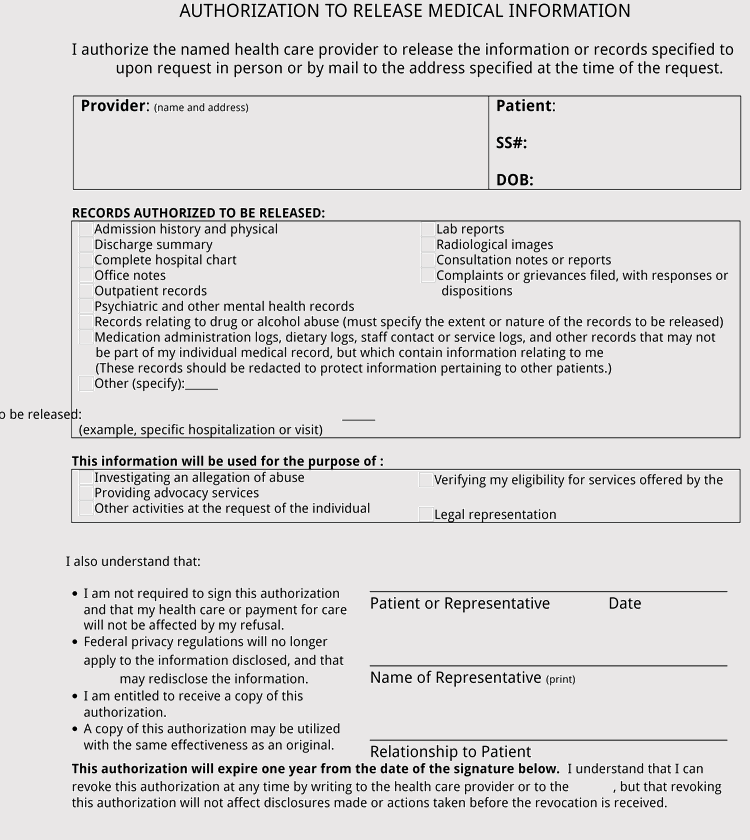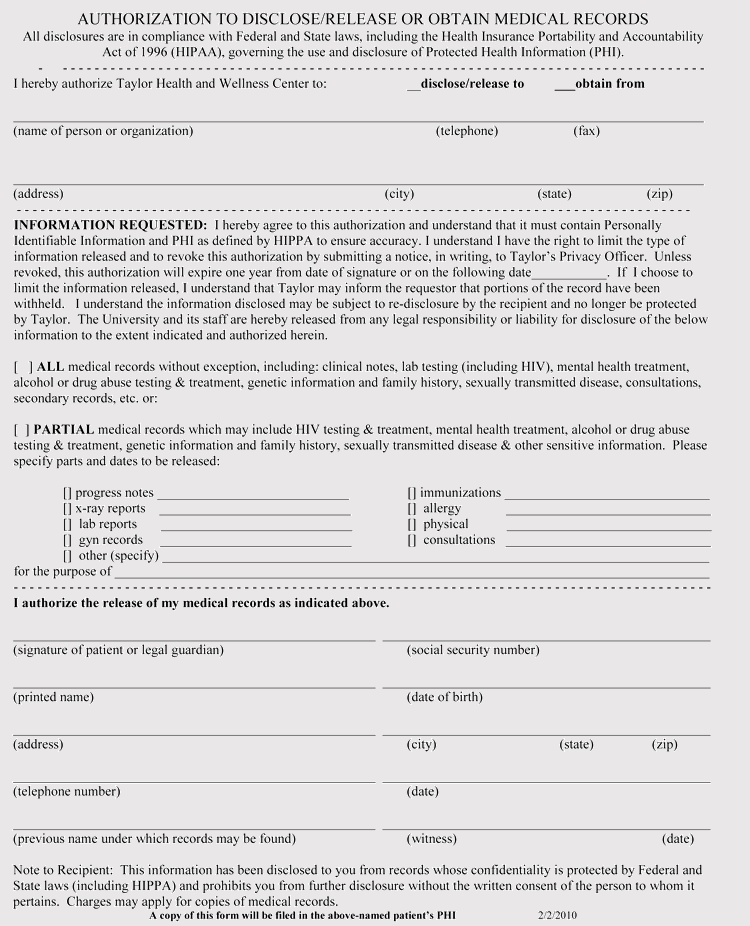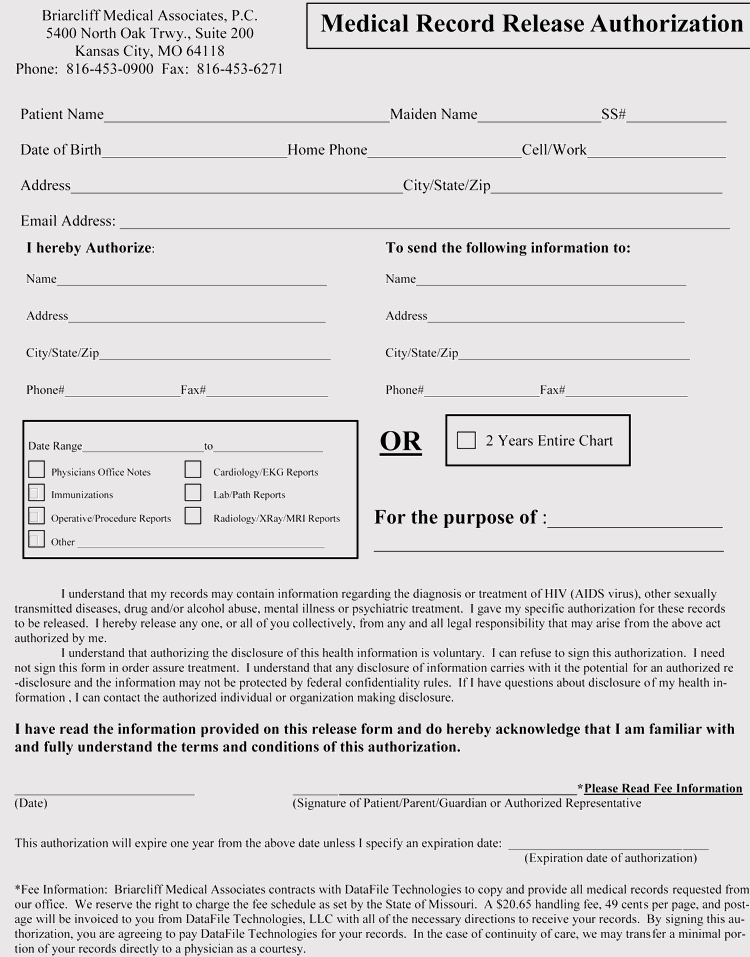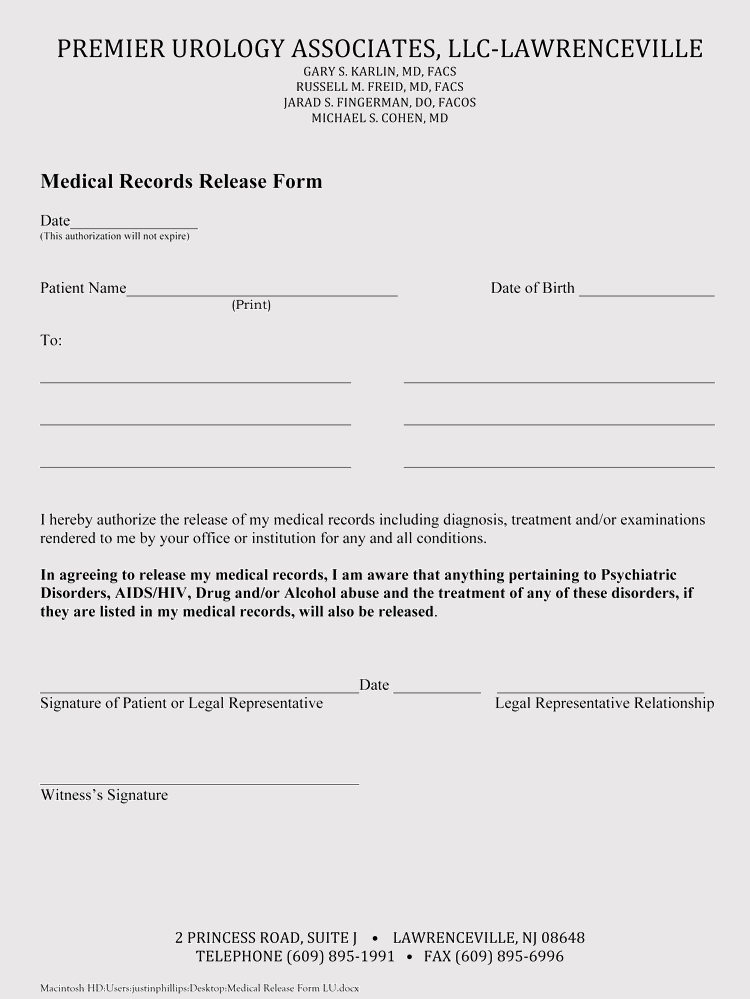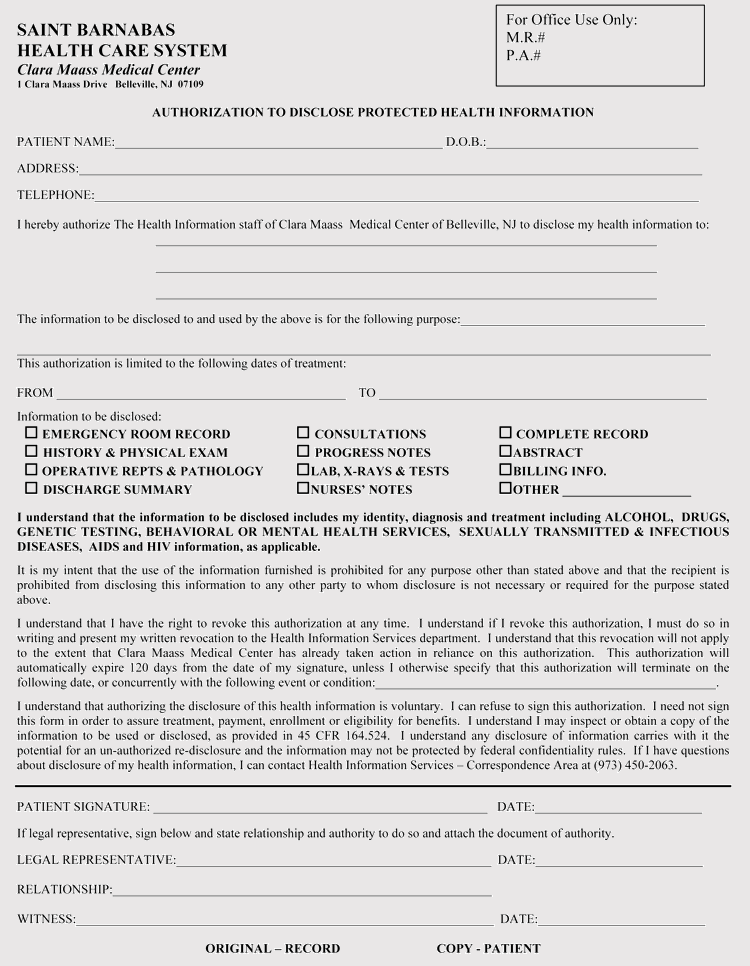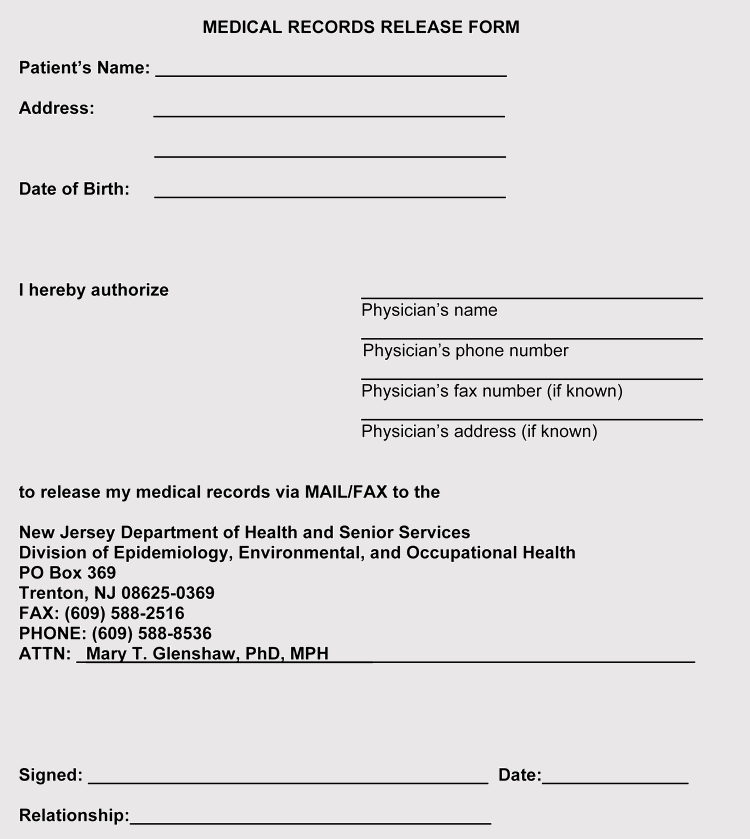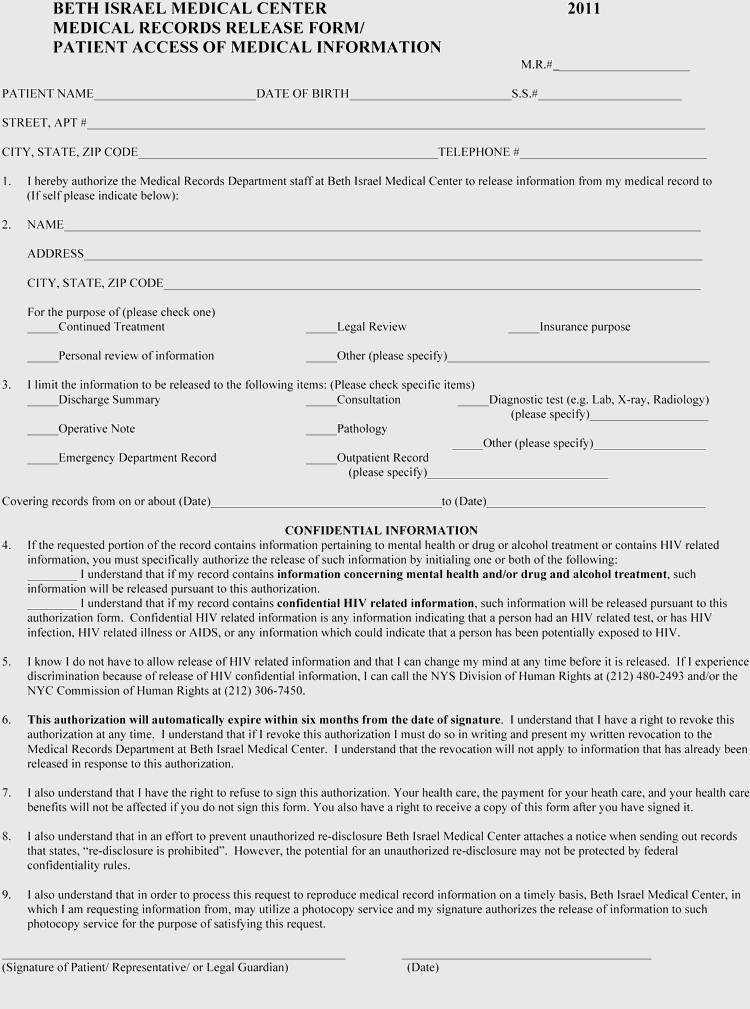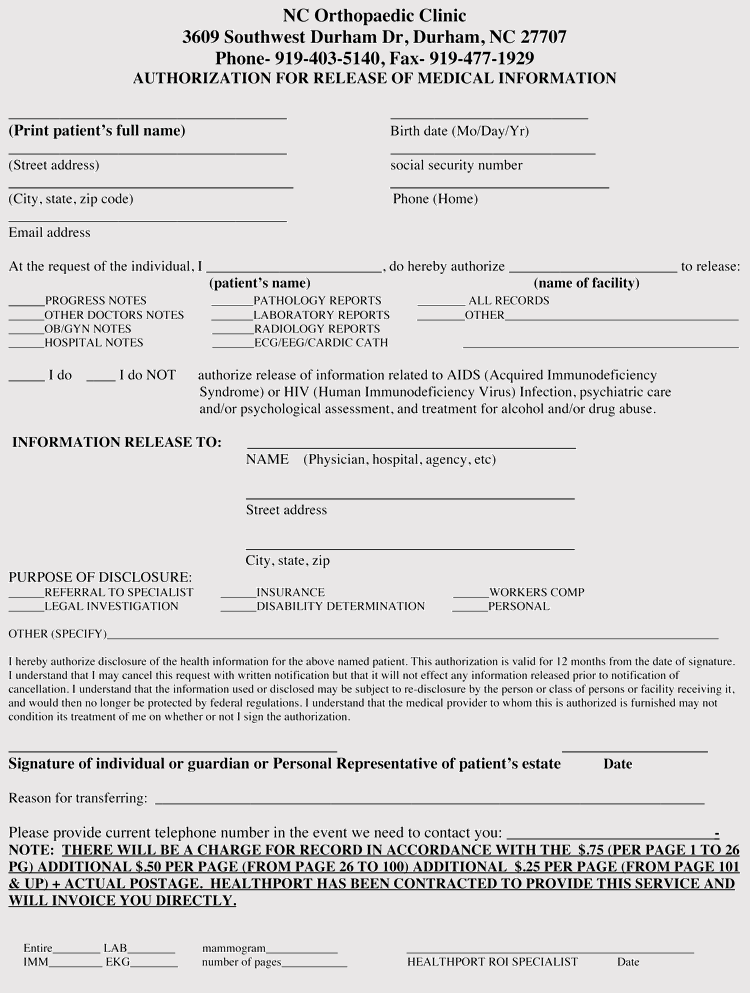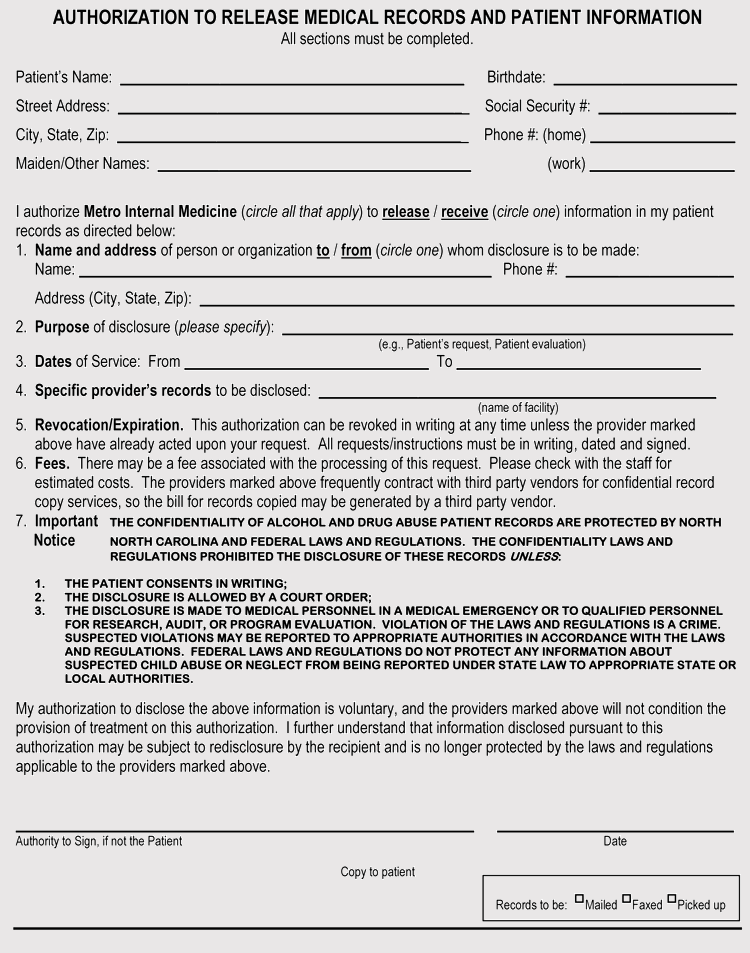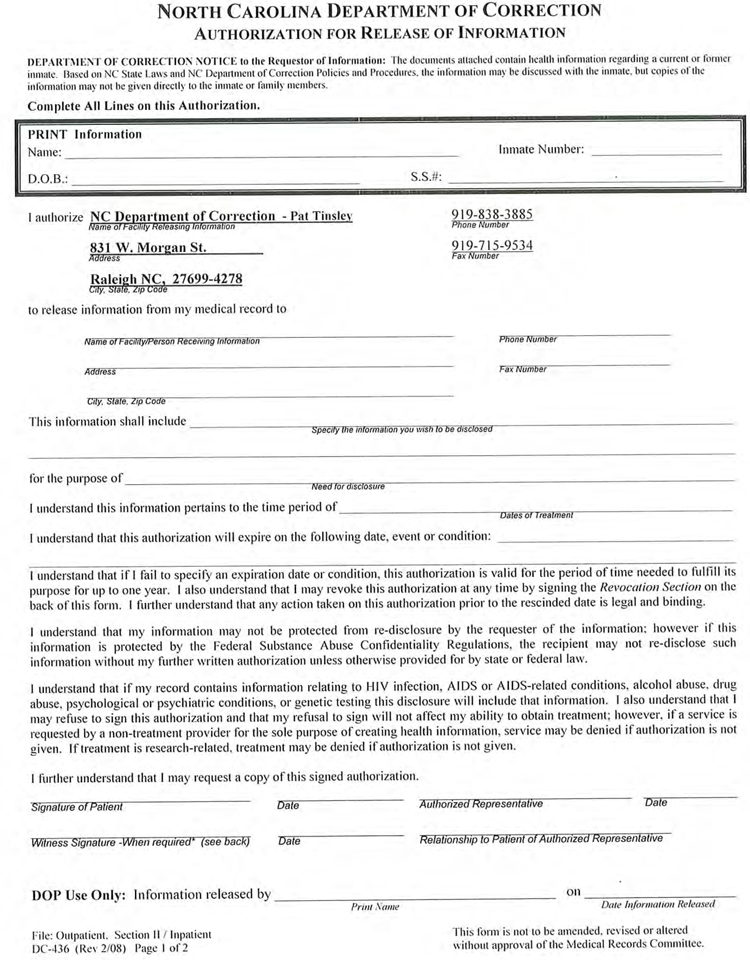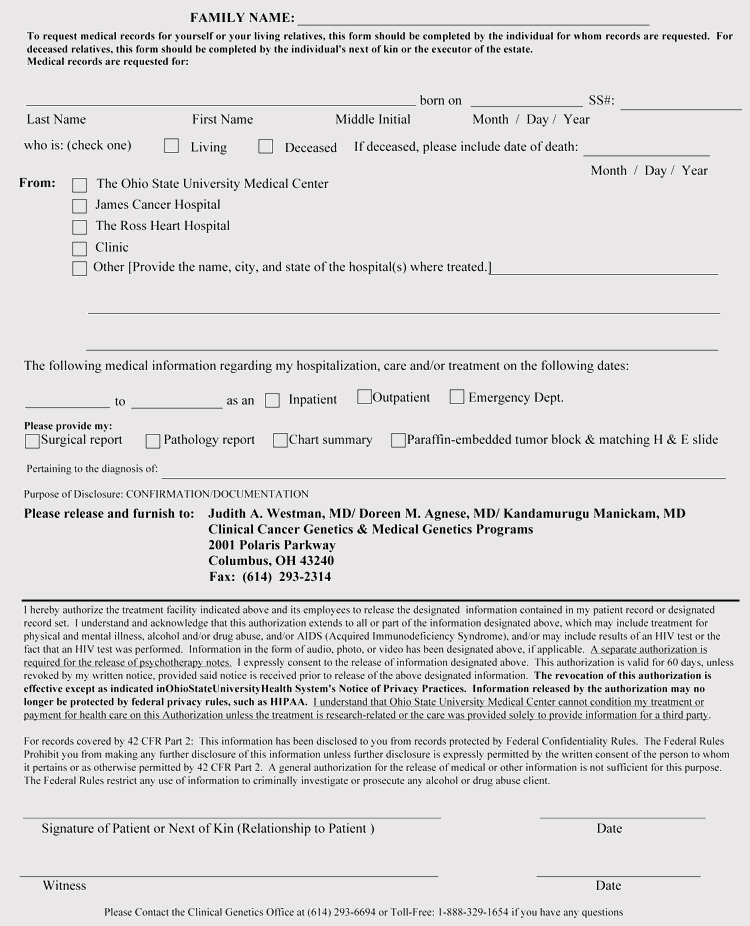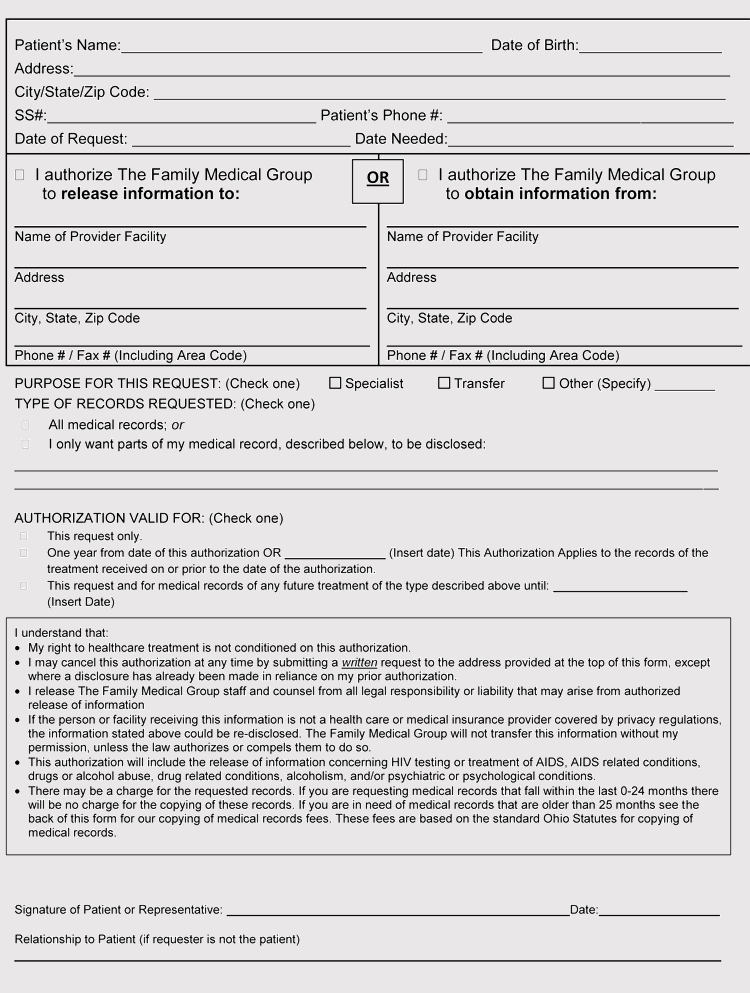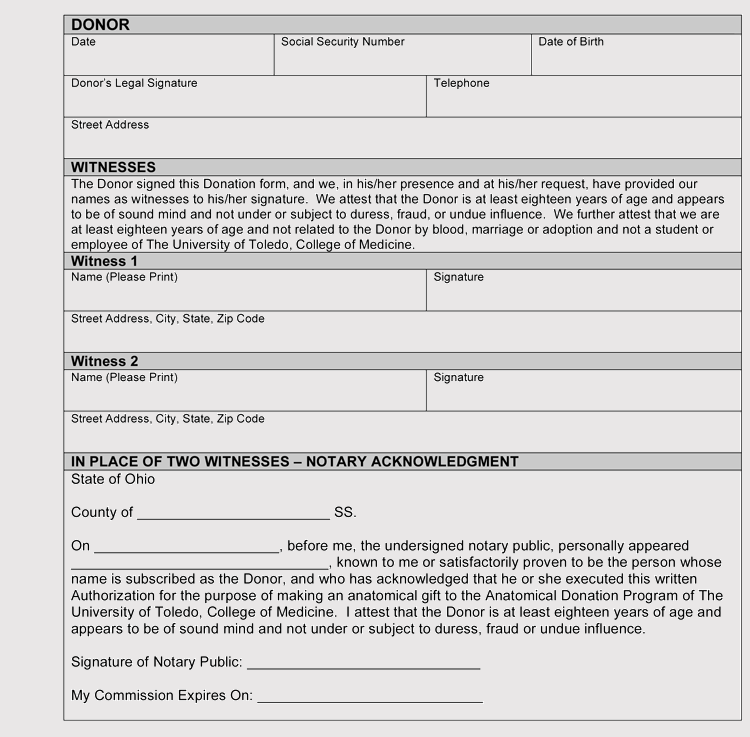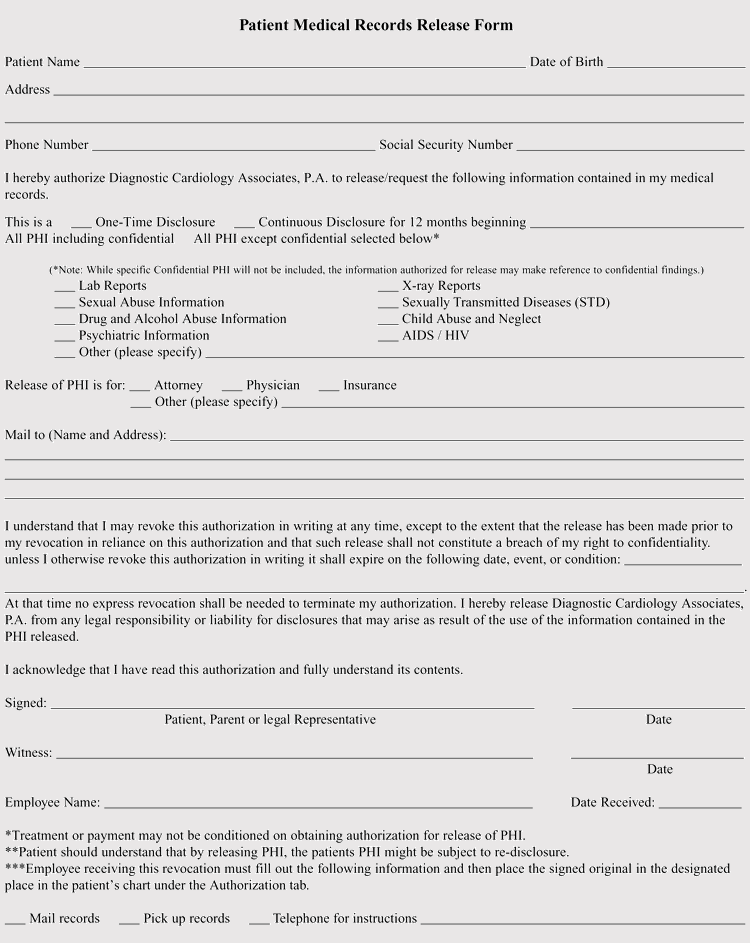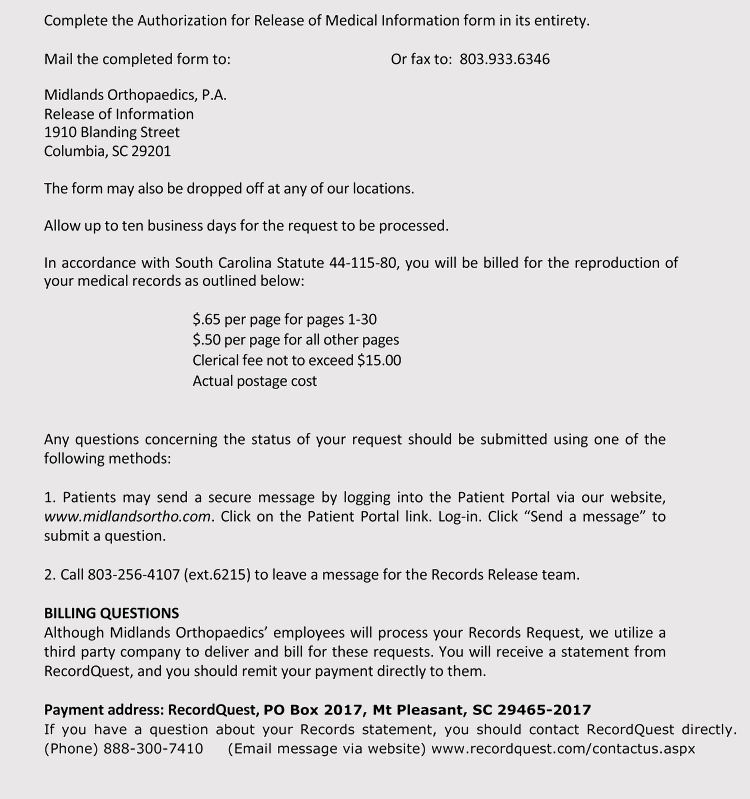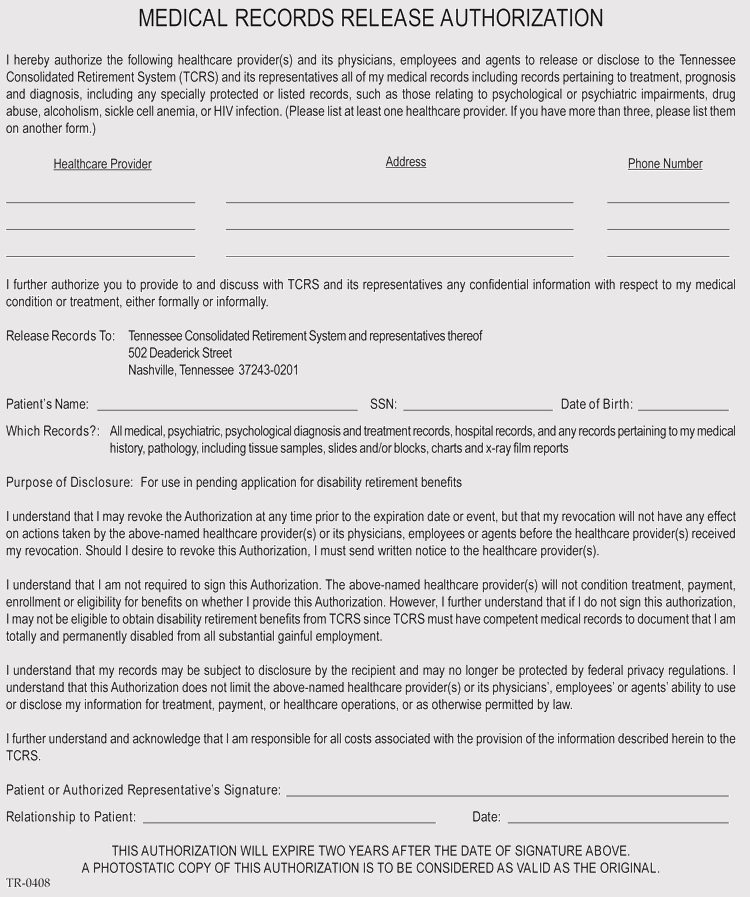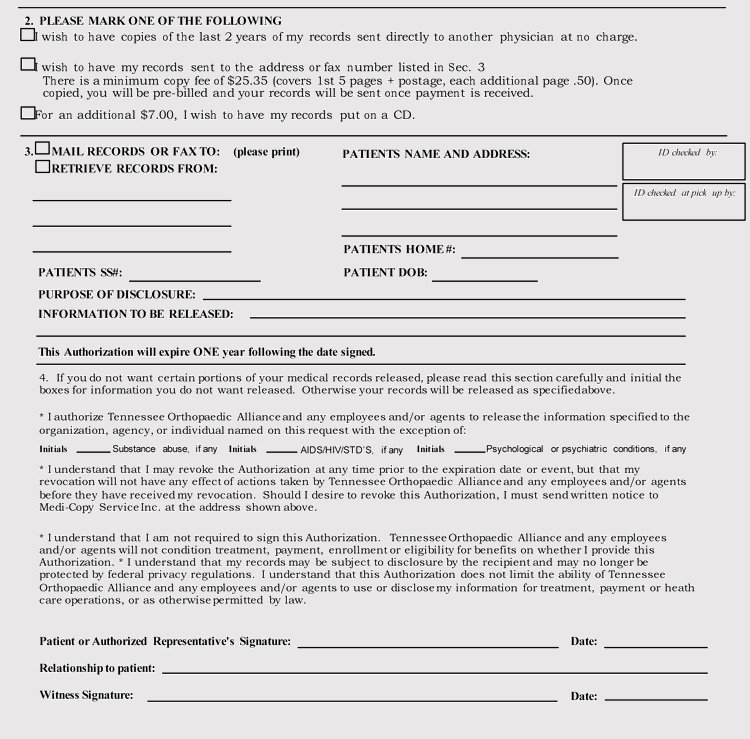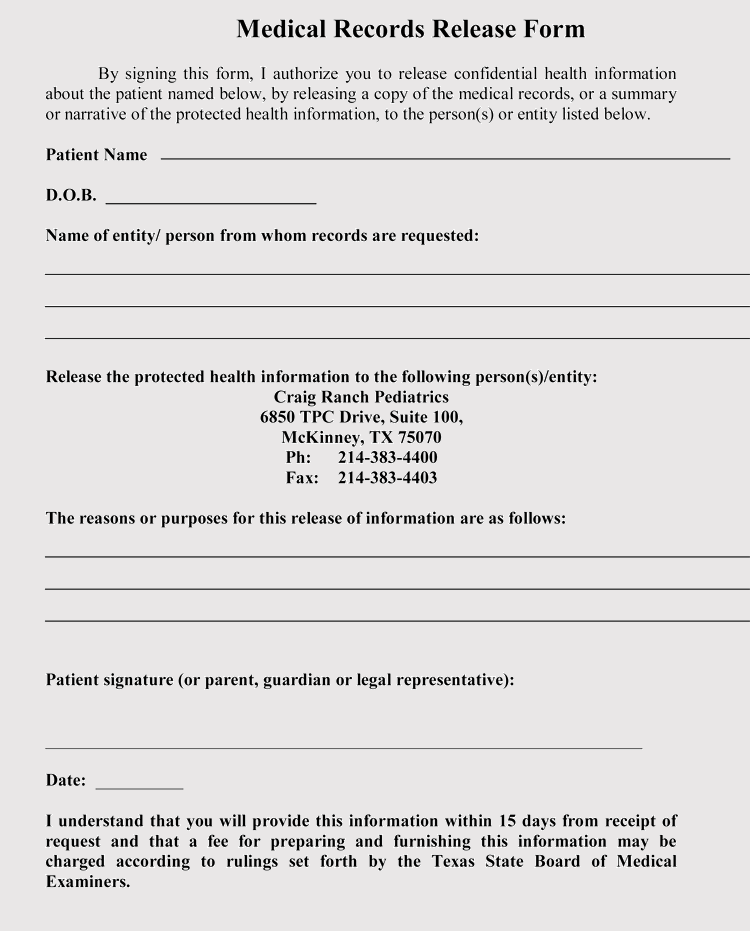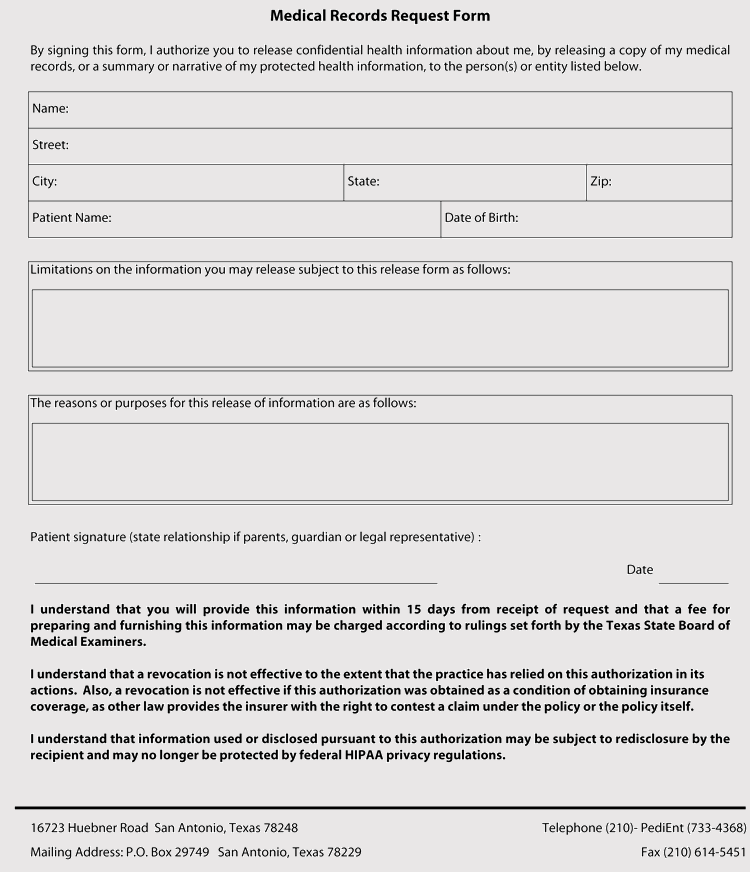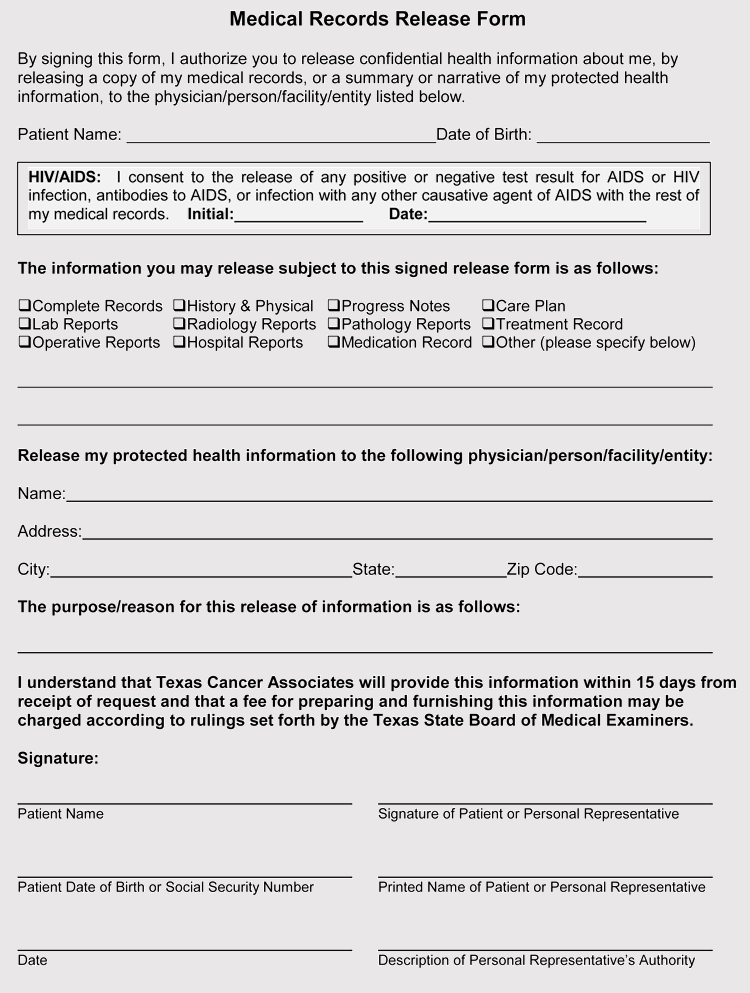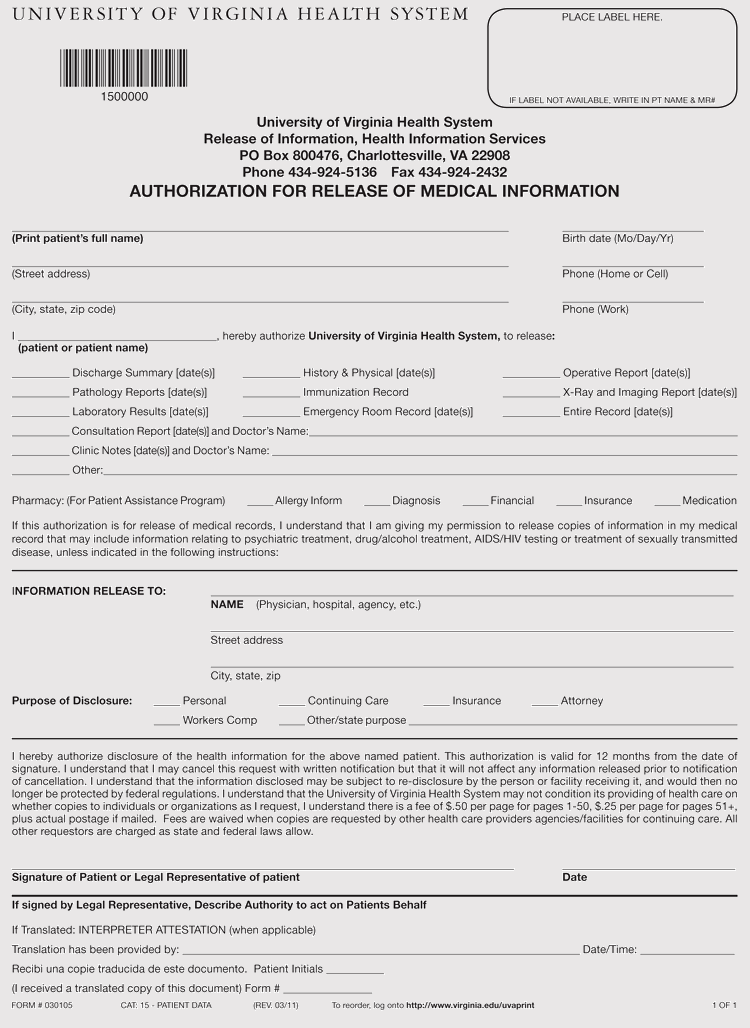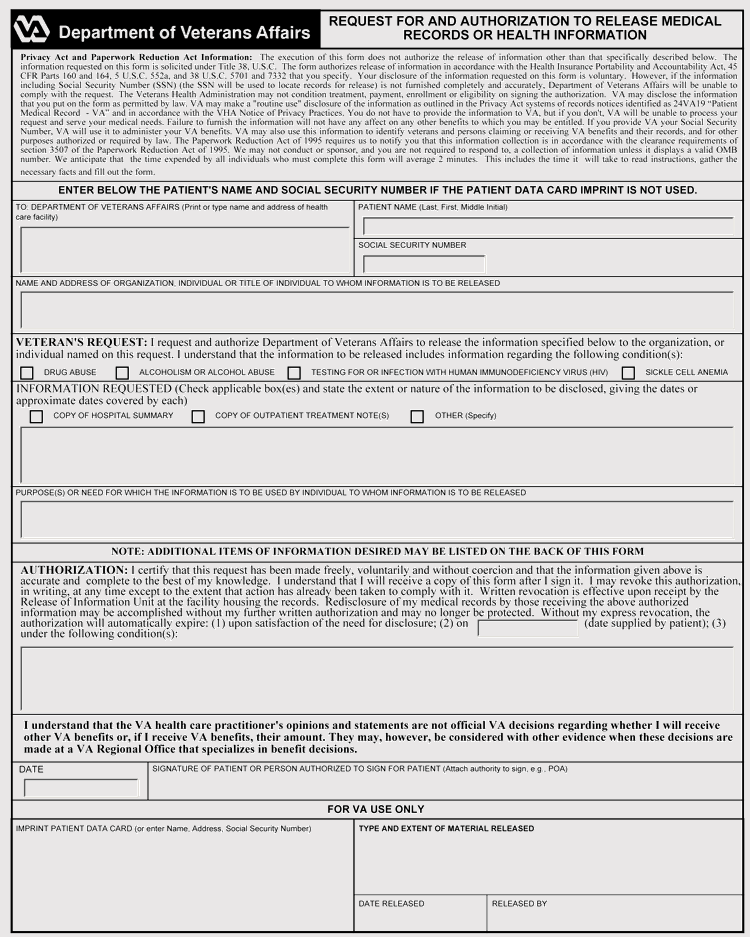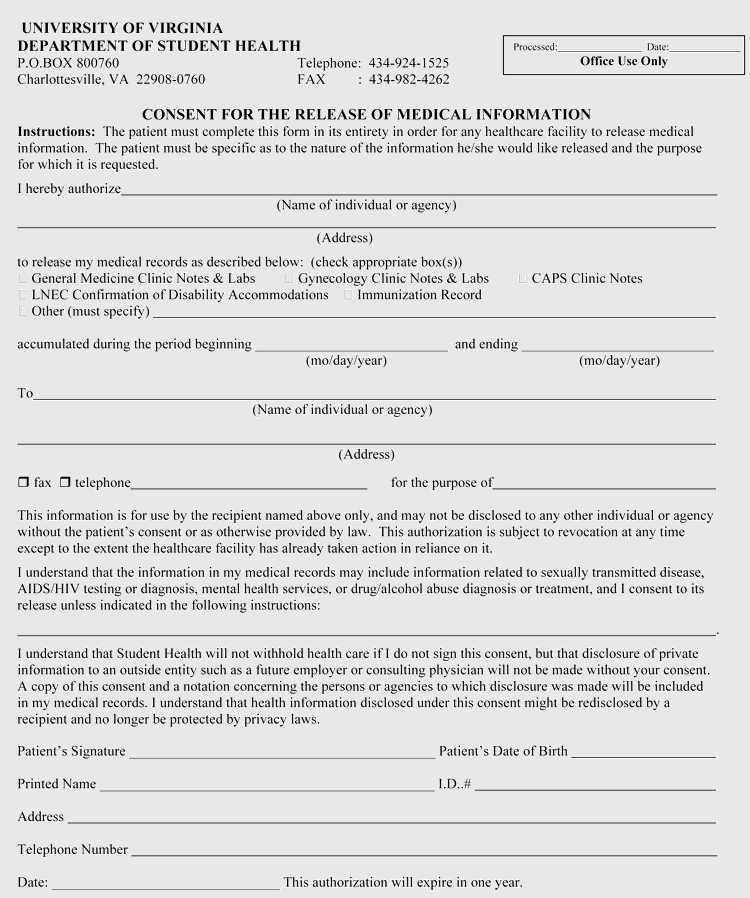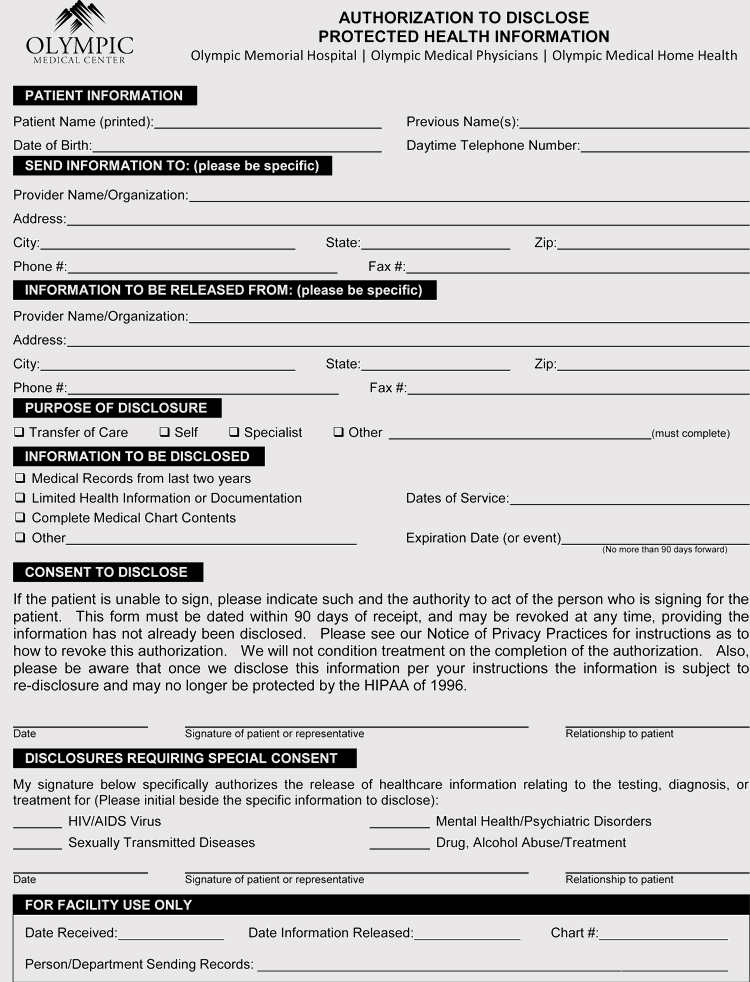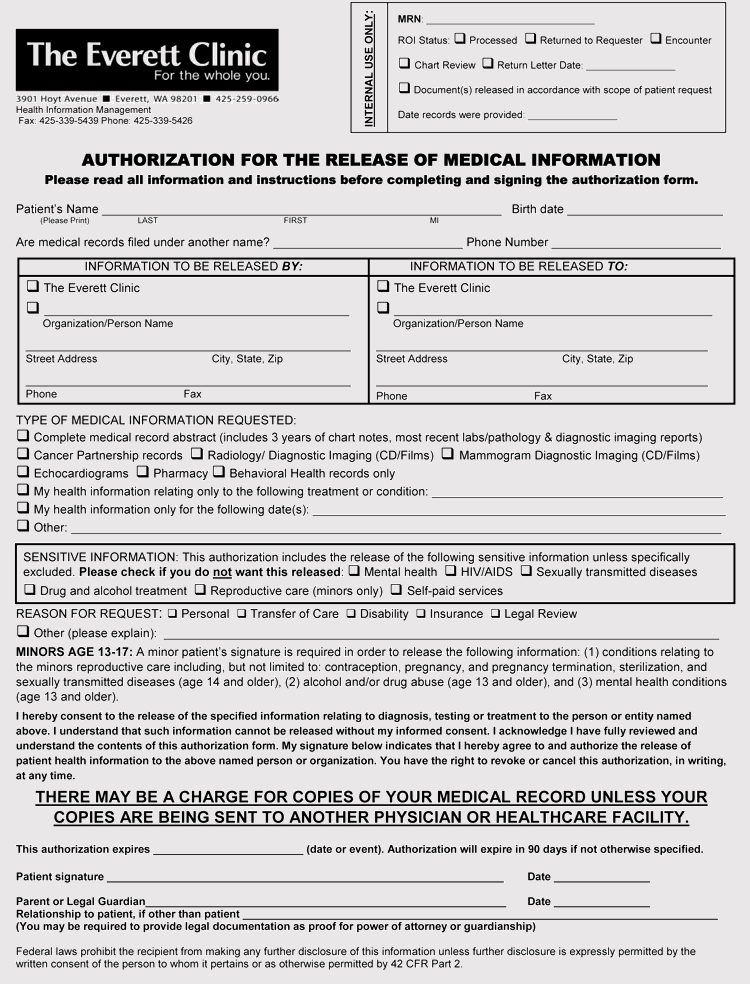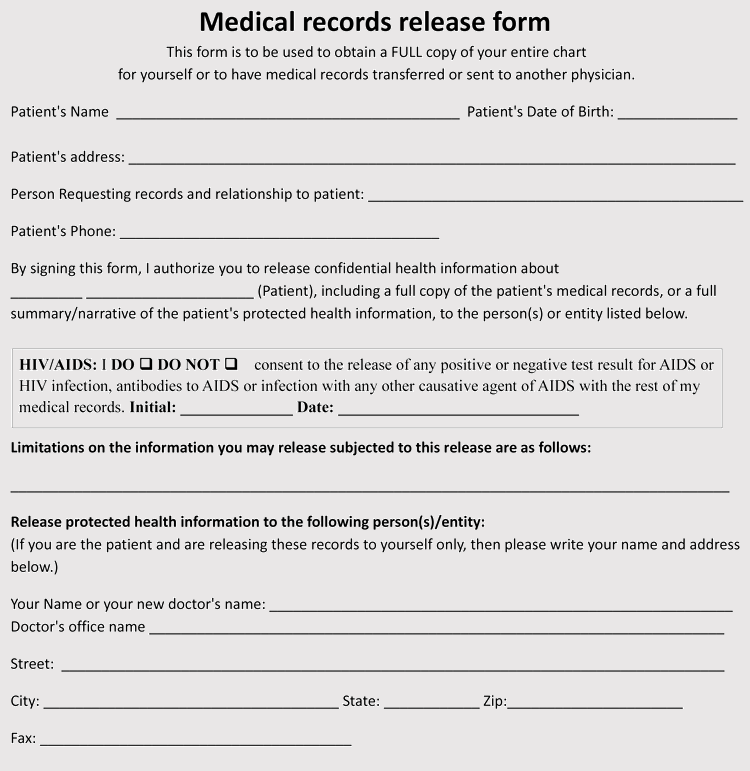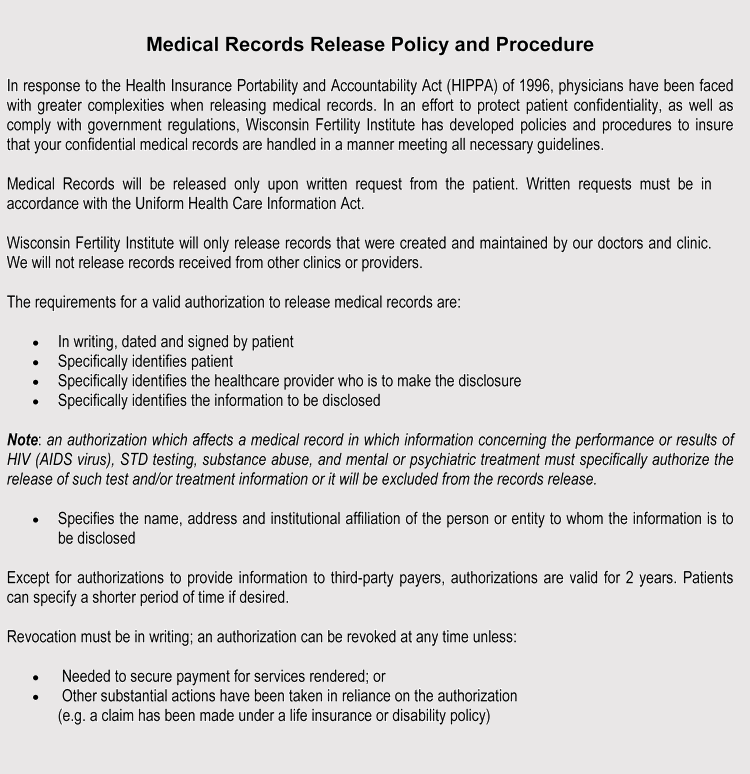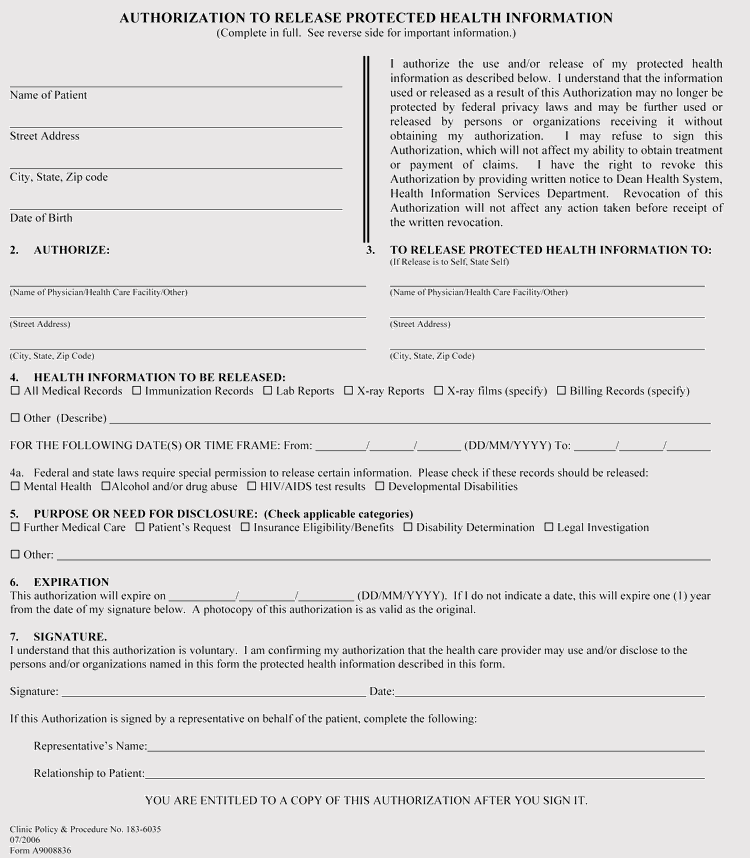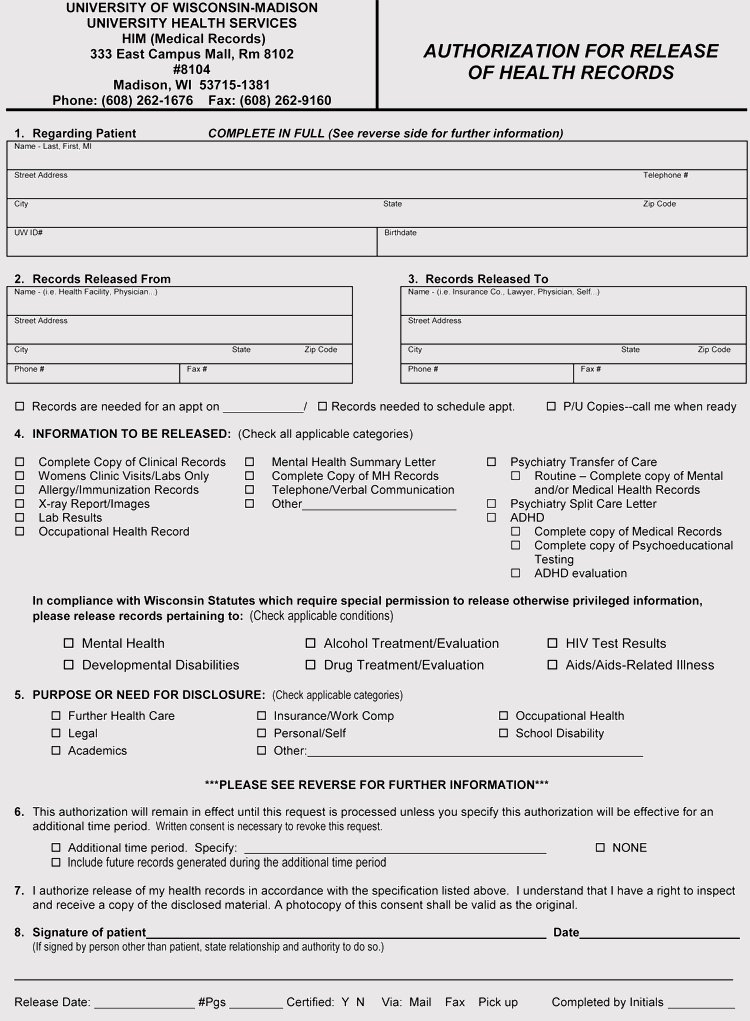Medical records release forms are formal documents used to authorize a health care provider to release a patient’s medical information to either the patient himself or herself or to a third party such as an insurance company or employer.
The Health Insurance Profitability and Accountability Act (HIPAA) of 1996 contains three rules relating to a patient’s medical records: the privacy rule, the security rule, and the breach notification rule. The HIPAA’s second title provides procedures and policies that maintain the privacy and security of a patient’s medical records. Any third-party requesting a patient’s medical information must be listed in the forms, failure to have done this will result in that party’s inability to access the individual’s medical information.
Medical records release forms can also be referred to as medical authorization, authorization to disclose health information, HIPAA release, and HIPAA authorization.
Free Release Forms
Alabama
Alaska
Arizona
Arkansas
California
Colorado
Connecticut
Delaware
Florida
Georgia
Hawaii
Illinois
Indiana
Kentucky
Louisiana
Maine
Maryland
Michigan
Minnesota
Mississippi
Missouri
New Jersey
New York
North Carolina
Ohio
Pennsylvania
South Carolina
Tennessee
Texas
Virginia
Washington
Wisconsin
Legal Considerations
A patient’s medical records are between him/her and the health care provider. It is therefore critical that legal consideration be taken before the release of medical information to a third party.
The following laws should be considered when writing the release forms:
- 45 C.F.R. Part 160: The law states the general administrative requirements that should be considered before the forms can be authorized. Some of these general administrative requirements include general provisions, state laws, etc.
- 45 C.F.R. Part 164: The law covers security and privacy issues that should be considered before the forms can be authorized. Some of the major issues covered under this law include security standards protecting electronic protected healthcare, notification in case of breach of unsecured protected health information, and privacy of individually identifiable health information.
- 45 CFR 164.524: The law states the rights and provisions regarding access of individuals to protected health information. This law extensively covers access to patient’s medical records included grounds of access denial
- 45 CFR 164.524(b)(1): The law covers specific implementations for an authorized representative to access an individual’s medical records. The law states that any individual requesting a patient’s medical records must do so in writing.
- 45 C.F.R. § 164.502(g): The law covers the rules on the uses and disclosures of protected health information. This law provides guidelines with respect to personal representatives authorized to access a patient’s medical records.
Consequences of not Having a Form
A health care provider is responsible for protecting a patient’s medical records. Medical information should only be accessible to the medical provider, the patient, and authorized third parties such as family, friends, etc. The release forms enable the authorized release of a patient’s medical information in such a selective manner. Failure of a party to use this form can result in a lawsuit by the patient for unauthorized access of his/her private information.
To avoid this, health care providers do not enable access to patient’s medical information without the forms. A health care provider risks the loss of his/her medical licenses should there be proof that he/she enabled unauthorized access of a patient’s medical records.
Common Situations to Use Medical Records Release Form
A third party requesting the release of a patient’s medical information must provide a valid reason to the health care provider. The reason provided can stem from common situations.
Situations that warrant the use of the form include the following:
Insurance
Insurance companies use the forms to acquire an individual’s medical information to underwrite life and health insurance policies, pay for bodily injury, and for worker’s compensation claims. The release of a patient’s medical information to an insurance company will enable individuals to collect medical insurance.
Continued treatment
A health care provider uses the forms to acquire patients’ medical history. Specialist physicians often use these forms when patients are referred to them or when physicians are new to the patients. Using the forms helps physicians identify what treatments patients have received that may or may not have worked to recommend new treatments or continue with the old ones.
Legal usage
The forms are legally used to access individuals’ medical records in court cases regarding personal injury or medical malpractice. In such cases, the forms help the court determine the cause of injury, calculate damages and establish if a health care provider’s medical choice for the patient were reasonable.
Job requirements
Companies and organizations use the forms during pre-employment exams and lab tests when hiring employees. The information obtained through the forms determines if an employee is physically fit to occupy the vacant position. The forms also help an employer determine whether an employee should go for sick leave and the leave period the employer should permit.
Research
Scientists and physicians use the forms to acquire a patient’s medical history to determine whether an individual can be included in clinical trials. The forms can also be used in medical studies for research into patients that suffer from a particular type of illness.
Medicinal marijuana
Dispensaries can use the forms to determine whether a physician has recommended the use of medical marijuana to a patient. The forms can also be used by law enforcement to determine whether an individual treats his or her illness with medical marijuana, especially in states where the substance used is categorized as illegal.
Places where the form is not used
Certain circumstances do not warrant the use of release forms. These circumstances include a patient’s medical treatment, payment of medical treatments, and operations.
Things to be Included
The information contained in the forms should be concise, clear, and detailed. Ensuring that all the relevant information is included in the forms protects all the parties involved.
It is therefore crucial that well-drafted medical release forms contain the following information:
- Who will disclose and who will receive the information,
- The information released,
- Where the information will be disclosed,
- Why the disclosure,
- When the authorization expires and
- How the authorization can be revoked
The explanation of each is given below:
Authorized request
The forms should contain the name and identification information of the physician (releaser) authorized to disclose the medical records, also known as the disclosing party.
The disclosing party’s name should be written as it appears in his/her identification papers, such as the Driving License.
Recipient
They should also contain the name and identification information of the recipient of the medical information. This information identifies the individual meant to receive a patient’s medical records.
Specific information
Patients should specify what information they are asking for to help the physician decide if the sharing of the information being requested is legally permitted.
The forms should contain the specific information an authorized third-party recipient is requesting. Some information that can be requested may not be accessible to authorized third-parties as the patient legally has the liberty to choose or deny permission to some of his/her medical information from the third parties.
By specifying the information the recipient requires, the physician can determine if it is within the information authorized by the patient and/or law, and thus the physician can let the recipient know whether the information will be accessible to them or not.
Risk of disclosure
They must contain a statement indicating that the medical information, when released, can be re-disclosed by the recipient.
The re-disclosure can result in the information losing its protection. The risk of disclosure statement ensures that the disclosing party is aware of the risks involved in releasing a patient’s medical information.
Expiration
They should state when authorization of a patient’s medical records will expire. This information is crucial as a patient or individual is constantly generating information from simple medical check-ups to long-term treatment for an illness that is being recorded. Indicating an expiration date ensures that newly generated medical information is not unnecessarily accessed.
Revocation
They should contain a statement indicating that patients retain their right to revoke access to their medical records. This right is protected by both state laws and HIPAA federal laws. Patients often revoke access to their medical records when they feel an authorized party is misusing the information.
Purpose
The release forms must also contain a third-party recipient’s purpose for seeking access to a patient’s medical information. If the patient is requesting their medical information themselves, it is normally straightforward and does not have to provide reasons for doing so as access to the information is their right.
However, the reasons provided by the third-party recipient must be compelling in general because medical records are considered an individual’s private information and hence can only be released upon provision of valid reasons only. In case the authorizing party/physician finds the purpose provided by a third party in case the patient does not fill the form him or herself, then he/she can deny access patient’s medical records to the third party.
Supporting documentation (if any)
They can sometimes require a third-party recipient to provide supporting documentation to access a patient’s medical information in case the patient him or herself did not authorize access. This documentation could include a subpoena – a separately written order to access the patient’s medical information – from a court of law.
Refusal to sign
The forms should state any patient-imposed conditions for refusal to sign the release form. A patient reserves the right to place any conditions he/she deems fit for the release of his/her medical records. This condition may include payment, treatment, enrollment, or eligibility for benefits. Health care workers (physicians) also reserve the right to place conditions for the authorized release of a patient’s medical records; however, these rights are limited and often require them to consult the patient. This section is also required to be included in the form.
Date and signatures
The patient should then sign the document and indicate the date when he or she signed it. By signing, the patient declares that the release form is valid and that they seek the mentioned information.
The patient’s signature gives the third-party authority to access the specified information. The unauthorized attempt of a representative to gain access to the medical records results in denial.Any medical information is highly sensitive and confidential. It is protected in the best ways they can as they try to avoid any case falling into the wrong hands. There are facilities required to verify the identity of the requester and confirm that you are authorized to access the required transfer records.
Conclusion
Medical information is highly sensitive and confidential. The state and federal laws protecting medical information are therefore stringent and specific. The medical records release forms enable authorized access to a patient’s medical records. However, these forms are subject to state and federal laws; hence, these laws must be consulted.
